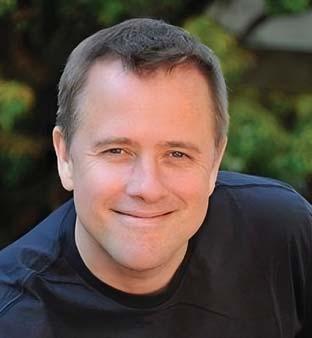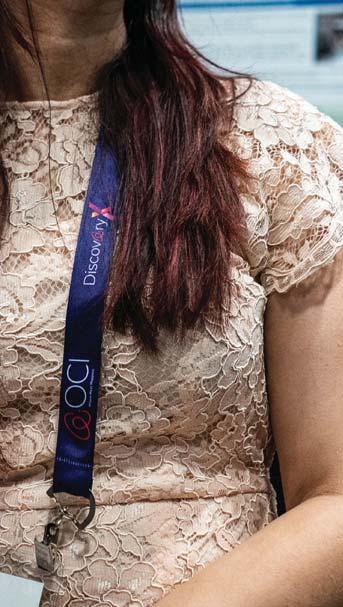

INSIDE:
SickKids rolling out AI
The Hospital for Sick Children, in Toronto, has been working diligently on AI models. It’s now ready to introduce several of the solutions into clinical practice.
Page 6
Improved handwashing
The Ottawa Hospital has been testing a system that dramatically improves handwashing thoroughness and reduces the outbreak of infectious disease. The project has shown great success.
Page 8
Radiology error reduction
Speaking at the recent RSNA conference in Chicago, a Harvard radiology professor noted that 56 percent of DI errors stem from communication breakdowns. She described how this happens and outlined a number of possible solutions.
Page 12
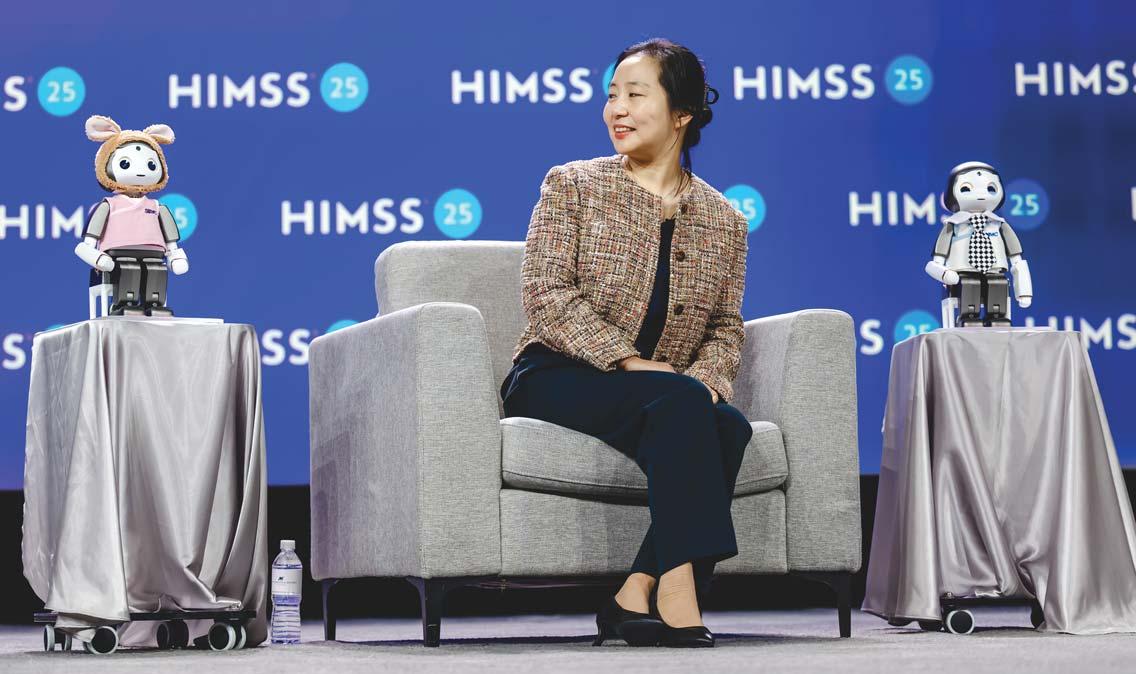
AI-powered robots take the stage at HIMSS
The Samsung Medical Center, based in Seoul, South Korea, demonstrated a pair of pediatric robots during a keynote presentation at the annual HIMSS conference, held in Las Vegas. Dr. Meong Hi Son, the interim CMIO (pictured above), explained the robots often interact better with children than adult clinicians do. She and SMC’s president also discussed leading-edge IT projects at SMC. SEE STORY ON PAGE 4
Universal translator aims to connect data across Canada
JERRY ZEIDENBERG
HAMILTON, ONT. – A team at Hamilton Health Sciences is leading the charge to devise a ‘universal translator’, a set of technologies that will allow the electronic records used by hospitals, doctors’ offices and other medical organizations to talk to each other more easily.
The Centre for Data Science and Digital Health, also known as CREATE, says it’s well along the road to producing the foundational technologies that will enable the interoperability of digital health records across the country.
The new architecture aims to connect organizations and clinicians using electronic health records via the Fast Healthcare Interoperability Resources (FHIR) standard.
While FHIR has been touted as a ‘magic bullet’ that will connect disparate systems, there are already too many versions of FHIR
and one has trouble understanding another.
CREATE is working in close partnership with Canada Health Infoway, along with Ontario Health and British Columbia’s Provincial Health Services Authority, to develop and implement a common, Canadian flavour of FHIR that will make communications simpler.
“One of the problems has been that FHIR is a language that has many dialects,”
There’s going to be a standardized flavour of FHIR, that is the same across Canada.
explained Jeremy Petch, PhD, head of CREATE, the group that won a contract from Canada Health Infoway to lead the development of a universal translator.
He asserted, “There’s going to be a standardized, Canadian dialect for FHIR, so that
you can plug into Canadian healthcare databases and exchange data.”
The project will help ensure that all healthcare providers, not just bigger organizations like hospitals and nursing home chains, can make use of the standard and communicate across the system.
“There are many small organizations that don’t have the ability to manage FHIR on their own, or to manage an identity server,” said Dr. Petch. He explained that CREATE and its partners are developing a service that healthcare providers can plug into, where numerous services are all managed for them.
It can be thought of as a cloud service that healthcare providers can tap into. Inside the cloud, the architecture is checking identities behind the scenes, and it’s acting as a hub that enables one provider to quickly communicate with another.
The project is working on a provincial
Universal translator technology aims to connect data across Canada
basis, with the first iterations in Ontario and British Columbia. After it’s shown to work in these provinces, the partners hope that other provinces will adopt the same architecture.
Recently, in separate projects, some strides have been taken in connecting hospitals and nursing homes using FHIR. However, the success stories have been limited to organizations using large electronic systems, like MEDITECH, Oracle/Cerner, Epic and PointClickCare.
Getting these systems to talk to one another has been a painstaking process, with one vendor working with another to ensure their systems can communicate.
In contrast, the approach used by CREATE is to deploy standards that have been specified by Infoway in its recent Pan-Canadian Interoperability Road Map, and to produce a system that everyone can tap into.
This includes not only the major vendors, but also the scores of mid-sized and smaller vendors providing apps to medical organizations.
“So, all vendors will know, if they write to
this new standard, they will be able to exchange data,” said Dr. Petch. “You won’t have to create a one-off for Oracle and another for Epic and another for MEDITECH. You’ll just have to do it once.”
After years of struggling with healthcare interoperability in Canada, many believe the solution spearheaded by CREATE in support of the Pan-Canadian Interoperability Road Map will make a big difference. “It’s the only viable path forward,” said Dr. Ted Scott, VP innovation and partnerships at Hamilton Health Sciences.
He said the system will be produced and tested first in Ontario and BC. “Other provinces will then be able to replicate the solution,” said Dr. Scott.
CREATE and its team of engineers and data scientists were chosen to lead the effort, said Dr. Petch, because they already have expertise with large systems and deployments. They’re also leaders in developing AI solutions for healthcare, and AI is expected to be heavily used in the new system.
Dr. Scott added that CREATE, as the main developer, avoids the biases and political issues that sometimes occur when vendors or government agencies lead
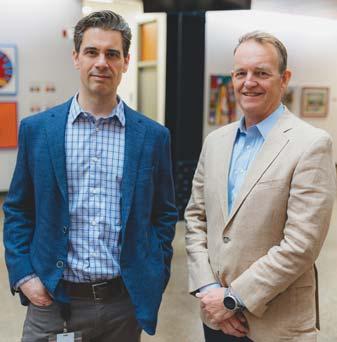
projects. “We’re a neutral party,” he said.
The project is in the first year of what Dr. Scott said will likely be a multi-year effort, as there’s a lot of work to be done.
A major component of the project is to create FHIR-powered apps that can be used by all clinicians and organizations to reach the data they need.
This work is being done using HALO, an Infoway-led standard that allows exist-
ing systems to connect to each other as part of the new solution.
Already, progress has been made on the development of an important app – a Canadian version of the International Patient Summary, which gives access to a patient’s key medical information, including medications, problems, allergies, vaccinations, test results and procedures.
Additional apps will be added to the Ontario system, over time, and other provinces that adopt the ‘universal translator’ architecture will be able to fine-tune it to their own needs.
Once there are enough apps available on the provincial systems, clinicians won’t have to open different programs to obtain the information they need. Instead, they can simply access the universal translator, which will query other databases and bring back the required data.
Dr. Scott estimated that it could take 10 years to get this new system up and running across Canada.
In addition to the technical work being done, he added there’s the human factor, as well – clinicians and healthcare organizations across Canada must agree to actually use it. “Getting people aligned to this core approach is crucial,” said Dr. Scott.
Issue DateFeature ReportFocus Report
May EHR / EMR TrendsPrecision Medicine
Nov/Dec AI/AnalyticsCardiology Coming up in 2025
For advertising or editorial inquiries, contact Jerry Zeidenberg, Publisher, jerryz@canhealth.com

Address all correspondence to Canadian Healthcare Technology, 1118 Centre Street, Suite 204, Thornhill ON L4J 7R9 Canada. Telephone: (905) 709-2330. Fax: (905) 709-2258. Internet: www.canhealth.com. E-mail: info2@canhealth.com. Canadian Healthcare Technology will publish eight issues in 2025. Feature schedule and advertising kits available upon request. Canadian Healthcare Technology is sent free of charge to physicians and managers in hospitals, clinics and nursing homes. All others: $67.80 per year ($60 + $7.80 HST). Registration number 899059430 RT. ©2025 by Canadian Healthcare Technology. The content of Canadian Healthcare Technology is subject to copyright. Reproduction in whole or in part without prior written permission is strictly prohibited. Send all requests for permission to Jerry Zeidenberg, Publisher. Publications Mail Agreement No. 40018238. Return undeliverable Canadian addresses to Canadian Healthcare Technology, 1118 Centre Street, Suite 204, Thornhill ON L4J 7R9. E-mail: jerryz@canhealth.com. ISSN 1486-7133
Publisher & Editor
Jerry Zeidenberg jerryz@canhealth.com
Office Manager
Neil Zeidenberg neilz@canhealth.com
Already, there has been a great deal of buy-in across Ontario and British Columbia. Dr. Petch noted that the architecture has been finalized and that testing in Ontario was to begin in late March.
CREATE is also working on a second project, funded through an Innovation Grant from Canada Health Infoway that’s associated with the universal translator. On this front, it’s working to convert the reams of free-form text found in clinical notes to a structured form that can be more easily accessed when querying electronic medical records.
Dr. Petch demonstrated a system that can read clinical notes and pull key data out of the free text and place it into a medical summary. It’s doing this via artificial intelligence and large language models. Dr. Petch said the CREATE team fine-tuned an LLM and has been further developing and evaluating the application using real clinical data from Hamilton Health Sciences – data that has been de-identified to protect privacy. He explained that other large language models – like ChatGPT – often use data picked up from non-clinical sources found on the Internet and the quality of their decision-making suffers. “They’re not using real clinical notes,” said Dr. Petch. “They get incorrect results and hallucinations.”
By deploying real clinical data to build and test their own solution, said Dr. Petch, CREATE has achieved higher-quality outcomes.
Contributing Editors
Dianne Craig dcraigcreative@yahoo.ca
Dianne Daniel dianne.l.daniel@gmail.com
Dr. Sunny Malhotra Twitter: @drsunnymalhotra
Norm Tollinsky tollinskyn@gmail.com
Art Director
Walter Caniparoli art@canhealth.com
Digital Media Specialist
Rebecca Downer rebecca@canhealth.com
Dr. Jeremy Petch (left) and Dr. Ted Scott

Samsung Medical Center execs explain how they earned Stage 7 awards
BY JERRY ZEIDENBERG
The Samsung Medical Center, in Seoul, South Korea, is arguably the most advanced digital hospital in the world – it has earned four of the HIMSS Stage 7 designations, a unique honour. But the organization didn’t get there without blood, sweat, toil and tears. And a few mistakes.
“It wasn’t a success from the start,” asserted Dr. Seung-woo Park, president and CEO, speaking at the annual HIMSS conference in March. “At first, it was a total failure. We bit off more than we could chew.”
Dr. Park, a keynote presenter, offered some distilled wisdom to attendees at a packed kick-off session at the Venetian Hotel conference centre. He and the hospital’s interim CMIO, Dr. Meong Hi Son also demonstrated a pair of pediatric robots created by the centre named Rumi and Nova.
Powered by AI, but remote-controlled at the session, the robots are designed to interact with children who may otherwise have difficulty relating to adults or other kids. As Dr. Son observed, the robots communicate with children, educate them, and help with their recoveries.
In describing the SMH’s march to digital and EMRAM success, Dr. Park said the key learning from the original EMR flop was to avoid the big bang approach and instead take small steps.
“We wanted a perfect system right away,” he said. But however hard the IT team tried to get it working, they just couldn’t make it happen.
So, the hospital changed to a more agile approach, said Dr. Park, creating and testing smaller components, then scaling up.
That approach worked better. From this new start, in 1996, the hospital racked up success after success.
Importantly, Dr. Park accentuated that the hospital’s IT journey wasn’t simply for
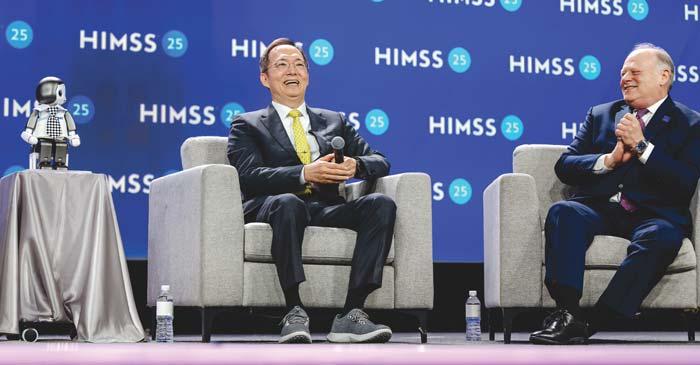
the sake of technology itself. Rather, the organization was experiencing an incredible surge in patient demand for services.
Patient visits rocketed from 100,000 in 1994 to 2.3 million in 2022. “Transformation was required,” he said.
Digital processes were adopted to help accommodate the increasing flow of patients. He said SMC became the first filmless hospital in Asia in 1996 and went paperless in 2008.
As part of its digital transition, it was able to process 4,500 lab samples daily with a turnaround time of one hour.
By the late 2000s, however, the system had already reached its capacity and the hospital launched its next generation EMR. People had to learn new ways of working, including closer collaboration. “People had to change,” said Dr. Park. “It took years.”
The new system was rules-based, and the hospital also implemented a standardized terminology. This new system is known as DARWIN, short for Data Analytics & Research Window for Integrated Knowledge.
The experiences with SARS, MERS and COVID-19 also spurred the hospital
to develop more contactless processes.
And a drive to reduce the documentation workload on nurses has resulted in greater job satisfaction and lower turnover. One example of how the burden was reduced was the introduction of point-ofcare scanning technologies.
As a result of empowering the nurses and cutting the paper burden, nurse turnover was reduced by 40 percent from 2019 to 2023.
The hospital also deployed a closed loop medication system. However, it wasn’t so easy to implement, taking seven years to perfect.
Most recently, SMC created a ‘digital twin’, a virtual copy of the hospital that allows it to test various applications and processes. Using the digital twin, it can see how a change in one part of the hospital may affect not only that area but others, as well.
For her part, Dr. Son said that success in deploying digital system requires respect for medical professionals in the organization. “You must let professionals feel respected, and that they will leave a legacy.
Moreover, balancing the need to deploy
new solutions with staff readiness or willingness to accept change can be difficult. “Choosing what not to do is as important as choosing what to do,” she continued.
She said there is sometimes a conflict in values between what different clinicians may want to deploy. When there is a conflict of this sort, it’s often best not to proceed.
To minimize hard feelings, she said it’s often necessary to tell clinicians their ideas are good, but they won’t be able to be used immediately.
Dr. Park said HIMSS was valuable to the organization in identifying gaps in the hospital’s digital strategy. These included analytics and a more comprehensive governance structure. The hospital was also encouraged to monitor outcomes.
Towards the end of the presentation, Dr. Son brought out the pediatric robots, Rumi and Nova. She explained that she herself is a pediatrician and found that she and her colleagues weren’t always able to provide the support needed by some of the children. So, they decided to create AI-powered robots that could interact with some of the children. “Kids feel better, recover better,” she said. “They even start taking care of the robots.”
The robots can be remote-controlled, and they talk to the kids. According to Dr. Son, they also have AI capabilities and can respond on their own, as well.
Asked what she foresees in the technological future, Dr. Son said she predicts that “agents” will come to the fore and play a more prominent role. “They will redefine what is possible,” she said.
She added that what she is most proud of in South Korea is its universal healthcare system. “No matter where healthcare goes, we shouldn’t lose this value,” she stated. And the human element should always be first and foremost, with technology as a helper. “Technology should be a light to guide us – like a flashlight.”
Pulling back the curtain on how policy decisions get made
BY AARIF SENTHIL
TORONTO – When it comes to healthcare policy in Canada, decisions aren’t always made where you might expect. It’s easy to assume that good ideas backed by strong evidence will naturally rise to the top, but the reality is far more complex.
Politics, funding models, bureaucratic inertia, and even marketing play major roles in determining which innovations take off – and which remain stuck in the pilot phase.
At the Future of Health Leadership, Informatics and Policy (FHLIP) 2025 conference, held at the University of Toronto, a panel of health tech leaders, policy insiders, and system disruptors unpacked the messy reality of policymaking, shedding light on the diverse forces that drive (or stall) innovation. The policy and leadership panelists included:
•Michael Millar – CEO and founder at Verto Inc., and adjunct lecturer at the University of Toronto.
•Helen Angus – former Ontario Deputy Minister of Health, with firsthand experience in how government machinery functions.
•Dr. Paul Kurdyak – director of Health System Research at ICES and a mental health system reform advocate.
•Will Falk – Senior fellow at the C.D. Howe Institute, a health policy expert with decades of experience advising government and healthcare leaders.
Healthcare leaders often highlight gaps in care, but the panelists made it clear: mental health isn’t just underfunded – it lacks the foundational infrastructure needed for a well-functioning system. Unlike cancer care, which benefits from clear referral pathways, structured funding, and accountability measures, mental healthcare continues to operate in a policy vacuum.
“If you’re diagnosed with cancer,
the system pulls you through. With mental health? You’re left to figure it out yourself,” said Dr. Kurdyak.
The Ontario Structured Psychotherapy (OSP) program was highlighted as a rare instance of progress. By embedding accountability measures – tracking service volumes and reallocating funding
The best innovations don’t always win, whether they’re AI-powered diagnostic tools or virtual care platforms.
based on real performance – the program demonstrated that funding alone isn’t enough. Without systemic governance and built-in accountability, even well-intentioned policies can falter.
Good ideas don’t sell themselves –marketing does: Here’s an uncomfortable truth: the best innovations don’t always win. Whether it’s AI-powered diag-
nostic tools or virtual care platforms, the ability to persuade matters just as much as the evidence when it comes to policy adoption.
Michael Millar bluntly acknowledged that private sector marketing often outpaces government-driven research. This makes it easier for well-branded but low-impact solutions to gain traction while truly transformative ideas can get buried in bureaucratic processes.
“I can run circles around evidencebased arguments with a good marketing team,” he admitted.
This insight underscores a key challenge for innovators: if you can’t translate your solution into a compelling value proposition that resonates with clinicians, politicians, payers, and bureaucrats alike, it’s unlikely to gain the necessary traction.
Why bureaucracies love the status quo (and how to break through): One of the more controversial – but widely ac-
Dr. Seung-woo Park (left) chats with HIMSS CEO Hal Wolf during a keynote presentation in Las Vegas.
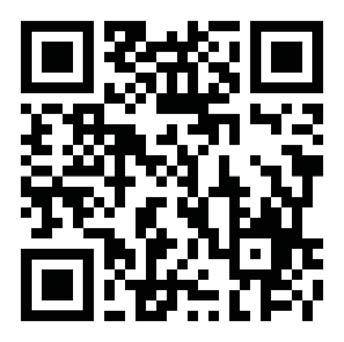



SickKids gets ready to deploy their new AI apps developed in-house
BY NORM TOLLINSKY
Toronto’s Hospital for Sick Children (SickKids) is poised to confirm its leadership in AI research with the introduction of several machine learning models for patient care. “We’re at the point now where we’re going to start turning on a bunch of solutions over the next year,” said Robert Greer, technical director of the SickKids AI initiative. “People are going to know about SickKids and AI in a pretty big way.”
Patients seeking care at SickKids’ Emergency Department (ED) will be among the first to benefit from a series of machine learning algorithms developed in partnership with SickKids ED physician Dr. Devin Singh, co-lead of SickKids AI Service and co-founder and CEO of Hero AI. These models leverage information from the triage process to help streamline care and reduce wait times.
If a patient exhibits symptoms characteristic of appendicitis, for example, one model will expedite ordering of diagnostic tests right away, a huge improvement over the current workflow that requires a child to wait, potentially for hours, to see a physician and only then be sent for blood tests and imaging.
Using the model to predict the likelihood of appendicitis, ED physicians will have test results when they initially see their patients, streamlining decision making and treatments. Similarly, if information conveyed in the triage encounter is indicative of a mental health crisis, an AI model currently deployed helps to reduce wait times by automatically alerting the psychiatric team to attend to the patient.
Another ED triage model will soon be deployed to alert clinicians to expedite interventions and administer medication if the wait time for a child with sickle cell disease in pain exceeds an acceptable threshold.
Pulling back the curtain
cepted – insights from the panel was that bureaucracies are designed to resist change. Not out of apathy, but because they operate under an entirely different set of incentives.
Will Falk pointed to Canada’s waittimes strategy as an example. The turning point wasn’t spurred by new research, but rather by a retired neurosurgeon and former UHN president and CEO (Dr. Alan Hudson) who was given direct control over $600 million and told to “go fix it.”
This anecdote raises an important question: where does decision-making power actually lie? The panelists agreed that many policies fail because no single entity holds the authority to make bold, sweeping changes. Mental healthcare is a prime example – without a clear leader, meaningful structural change remains elusive.
“You have to solve every problem at

Also aimed at streamlining operations is an ED census model that predicts patient numbers by hour based on six years of historical data. If the model predicts a surge in patient numbers, ED management can open up more space and bring in more staff. “On the flip side,” said Greer, “we can close areas and send some of our staff to other areas of the hospital if the model predicts fewer patients.”
Most of these ED triage models are currently in a silent trial phase awaiting final approval but should be in clinical use by early next year, said Greer, who points out that the application of AI in the ED is just the tip of the iceberg.
One model in development for the ICU uses waveform data from medical devices to alert clinicians if a patient’s condition is worsening. Another model in the imaging space detects hydronephrosis, a kidney disorder, to speed a decision for surgery.
SickKids is “somewhat conservative” about deploying machine learning models into clinical practice because “at the end of the day patient safety is our top priority,” said Greer, noting that in an era where the
least five different times – once for politicians, once for bureaucrats, once for clinicians, once for economists, and once for public health,” Falk explained.
Evidence alone won’t drive policy –but strategic data might: Academic research plays a role in shaping policy, yet the way evidence is packaged and presented is what ultimately drives impact. The pandemic’s science advisory groups demonstrated this dynamic well – strong recommendations didn’t always translate into immediate action because policy must balance competing priorities: economic, political, social, and clinical.
One example illustrating challenges in workforce planning (HHR) is telling. While the number of family doctors in Canada has doubled over the past decade, improvements in working conditions have lagged significantly.
Burnout is rampant, and the effective capacity of the workforce remains well below the actual headcount. This discrepancy underscores that successful workforce planning isn’t just about increasing
regulatory landscape is actively changing, SickKids has developed its own policies and standards.
“One of the biggest challenges we face as an organization is that there’s little government funding for AI work,” said Greer. “It’s largely funded by grants and we’re lucky to have a great foundation that works to raise money and support work like this.”
One important donor is Pure Storage, which gifted high performance storage equipment to SickKids several years ago.
“In order to train a machine learning model and predict the future, you need a lot of historical data, and you need a place to put it,” explained Greer. “It’s a very computationally and data intensive activity, so it’s important that the storage we have is as high performance as possible.
“The vast majority of machine learning models that we train and build to solve a clinical problem will fail, so we need an infrastructure solution that allows us to fail as quickly as possible because eventually, one will work, and the faster we get there, the faster we can implement a solution and have an impact on care.”
numbers – it must also address the quality and sustainability of working conditions.
Where do we go from here? The panel closed by challenging the status quo and asking: How do we align incentives to accelerate meaningful change?
Some key solutions emerged:
•Rethinking funding models – shifting from static funding that often rewards
Without a clear leader with decision-making power, progress in mental healthcare remains elusive.
inefficiency to pay-for-performance models could drive better outcomes.
•Building accountability into mental health – applying a structured pathway approach, like that of Cancer Care Ontario, could transform mental health services.
•Bringing employers into the equation – given that mental health costs hit businesses hard, leveraging private sector
AI adoption is rapidly increasing across healthcare and life sciences (HCLS), but many organizations are struggling with the infrastructure needed to meet the highperformance data and energy demands. This partnership is driving an end-to-end transformation in healthcare and life sciences, providing exceptional performance and reliability to meet the growing demands of modern AI applications.
“Pure Storage FlashBlade is a gamechanging solution, purpose-built for modern, unstructured workloads. It simplifies data management and accelerates AI processes, significantly boosting productivity for data scientists and agility for data architects,” said Bill Bryer, the company’s healthcare lead for Canada.
“Pure Storage offers a centralized, efficient data platform integral to deep learning architectures. This powerful combination enhances the productivity of data scientists and simplifies scaling and operations,” explained Bryer.
The synergy between pure storage’s massively parallel storage architecture and AI ecosystem partners accelerated computing is transforming key HCLS use cases such as medical imaging, clinical decision support and pathology, genomics and drug discovery.
“Pure Storage’s equipment was instrumental in getting us to where we are today, but we’re at the point now where we’re going to have to dramatically scale up what we have,” said Greer.
Fortunately, Bryer is a big fan of SickKids’ AI work and is excited to expand the partnership to ensure the hospital’s infrastructure remains fast and easy to upgrade as they continue building out innovative new means of patient care.
State-of-the-art storage and processing infrastructure will also help SickKids as it engages with other paediatric hospitals in Canada and the U.S. and explores opportunities to market its expertise.
partnerships might inject much-needed innovation and funding into care models. Final thoughts – the future of healthcare policy innovation: While healthcare may never move at the pace of Silicon Valley, there are clear opportunities to streamline decision-making, embed accountability, and drive evidence-based change more swiftly. To make this a reality, we need:
•Clear leadership – someone must take ownership of the challenges.
•Smart marketing – good ideas need narratives that resonate with decision-makers.
•Strategic funding shifts – money should follow performance, not just history.
•Bigger public-private partnerships –governments can’t (and shouldn’t) solve everything alone.
If we want a healthcare system that truly works for everyone, it’s time to start designing it as the data driven, tech-enabled ecosystem it ought to be.
Aarif Senthil is an MHI candidate at the University of Toronto.




Take Control of Medication Reconciliation with Remote Expertise
Enhance Patient Safety. Reduce Workload. Improve Efficiency

Remote Med Rec: Comprehensive Medication Reconciliation Support
Remote BPMH: Accurate & Efficient Medication Histories
Reduce Errors & Improve Patient Safety Free Up Emergency & Inpatient Staff Seamless Integration with Your Hospital’s Workflow

7 Days a Week Support, with Future 24/7 Expansion
Powered by FirstHx’sMedHxSoftware –Algorithm-driven technology ensures accuracy and efficiency.
Overwhelmed staff? Limited pharmacy personnel? We can help. Our remote solutions ease the strain on your team, whether due to turnover, vacations, or staffing shortages.

Ensure Safe Medication Management at Admission, Transfer & Discharge
Reduce Readmissions & Improve Patient Outcomes
Support for Hospitals with Limited Pharmacy Resources
Available as an Add-On to Remote BPMH


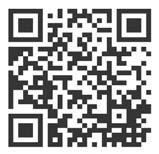
Lumenix provides a quantum leap in AI-powered monitoring to support patient safety at The Ottawa Hospital
Acollaboration between The Ottawa Hospital (TOH) and Canadian technology firm Lumenix is pioneering the use of artificial intelligence (AI) to tackle some of healthcare’s most persistent challenges, such as hand hygiene compliance and the detection and prevention of falls –and the collaboration is proving to be a gamechanger in infection control and patient safety.
It is well known that hand hygiene is the most important defence against hospital-acquired infections, which can lead to significant illness, mortality and increased length of stay for patients. According to the World Health Organization, 70 percent of these infections are preventable through proper hand hygiene compliance, but achieving this remains difficult.
In Canada, the Public Health Agency of Canada estimates that hospital-acquired infections affect more than 200,000 patients annually, leading to 8,000 deaths each year, further highlighting the need for more effective solutions.
Recognizing the urgent need to tackle this problem in a new way, TOH and The Ottawa Hospital Research Institute (OHRI) turned to Lumenix. In 2023, following the completion of a highly successful federal government clinical validation of Lumenix’s Artificially Intelligent Monitoring System (AIMS), TOH, OHRI and Lumenix implemented AIMS on TOH’s 36-bed E5 Transitional Care Unit.
“The Ottawa Hospital knows there is a need for innovative solutions to address healthcare’s challenges, and we have been actively integrating AI into various aspects of our work to enhance patient care and operational efficiency,” said Suzanne Madore, chief operating officer and chief nursing executive of TOH. “We recognized the multi-faceted potential of AIMS for hand hygiene during the COVID-19 pandemic and remain impressed with the improvements we continue to achieve together since we began this purpose-driven collaboration.”
to analyze complex clinical environments and subtle human behaviours, resulting in unbiased and reliable data.
Using unobtrusive, ceiling-mounted devices that are strategically installed throughout the patient environment to provide ubiquitous coverage, its IR lasers provide a 360-degree, three-dimensional understanding of the clinical operational environment through depth measurements.
This allows AIMS to understand the environment and recognize actions, monitoring spaces 24/7 in the light or dark.
For example, it recognizes 100 percent of hand hygiene opportunities for all staff, visitors, and clinicians on the unit, observes if hand washing technique and duration has met protocol, determines if hands remain sanitized prior to coming into contact with a patient, and prevents hand hygiene violations before they happen with real-time notifications.
AIMS uses audio and visual alerts – termed
implementation science, to tackle challenging patient quality and safety issues that can directly translate into better patient outcomes,” said Dr. Jeremy Grimshaw, MBChB, PhD, medical director at Lumenix. “Our innovative use of technology and AI helps create a culture of continuous improvement. What’s important is that AIMS integrates into the hospital environment, providing real-time feedback without disrupting workflows.”
The technology has been embraced by patients and visitors with zero complaints. Frontline healthcare workers have also provided positive feedback regarding the integration of AIMS into their daily routines. Nurses say AIMS has become an essential tool in promoting patient safety and reducing the risk of infections.
“It’s really been helpful,” said Colleen Menary, a clinical care leader with TOH. “It’s like having a colleague that’s there to just give you a gentle nudge when you need a reminder on some things.”
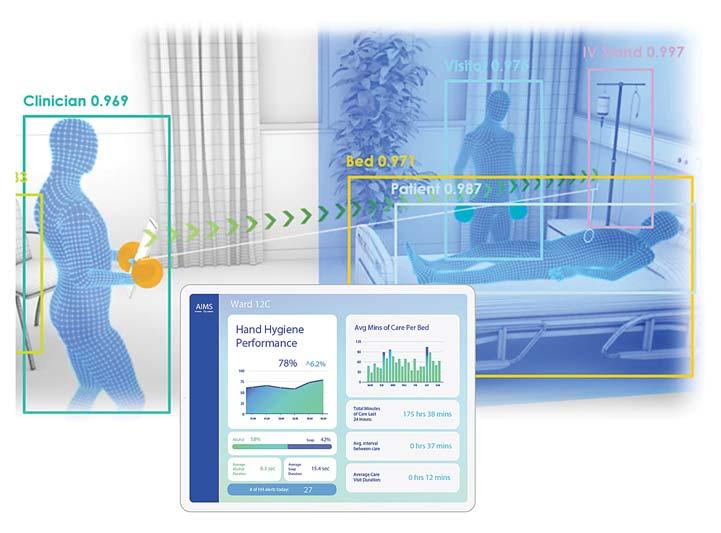
Historically, hospitals have attempted to improve hand hygiene compliance through a variety of methods, including staff education programs, visual reminders such as posters, and even incentive-based compliance initiatives.
Currently, hospitals monitor hand hygiene compliance using manual audits that capture only a fraction of daily hand hygiene events, and data collection is often subject to bias or human error. The challenge has always been to implement a solution to promote and monitor hand hygiene that is both effective and non-intrusive – which is where AI-driven systems like AIMS present a major breakthrough.
AIMS doesn’t rely on cameras or capture personal information. Instead, AIMS uses advanced 3D sensor technology and artificial intelligence to anonymously perceive, understand and make predictions about 3D movements (tasks, activities, people, proximity, asset tracking and related risk events) among healthcare professionals, patients, and visitors. AIMS preserves privacy while supporting compliance. The system leverages machine learning models
nudges – to provide helpful reminders in real-time that support behaviours or actions that could potentially lead to a reduction in adverse events.
AIMS provides the equivalent of seven years of hand hygiene data daily compared with traditional human auditors. AIMS generates complete data on hand hygiene compliance within a clinical unit 24/7, which is available to unit management and staff to support each other on a user-friendly dashboard. Teams can review the data at the start of each shift as they work to reduce the spread of infections, or prevent adverse events such as falls, and improve overall safety within the hospital environment.
“We have positive feedback from our staff, our patients, and our family members,” said Sybile DeliceCharlemagne, clinical manager at TOH. “When they understand what it does, they’re like, ‘Wow, that’s great that the hospital is taking a step to keep my loved one safe.”
The E5 Unit at TOH saw a 27 percent sustained, relative increase in daily hand hygiene events. Most importantly, there wasn’t a single outbreak in the 12 months following implementation of AIMS.
“AIMS provides a completely new way, based on
Experts in infection control and prevention worldwide have been taking notice of the AIMS technology and its results.
“As we navigate the future of healthcare, perceptual-action AI platform technologies like AIMS are revolutionizing patient safety by bridging the gap between individual patient needs and systemic efficiency,” said Scott Delaney, chairman and CEO of Lumenix. “This ability to evolve and expand its applications makes AIMS a powerful tool for transforming healthcare, setting a new standard for patient safety and operational efficiency. As a visionary in this space, we see AIMS as a catalyst for a broader shift towards more intelligent, responsive healthcare systems – ones that seamlessly integrate technology and human expertise to deliver better outcomes for all.”
AIMS is more than just a solution for hand hygiene; it’s a versatile platform technology that not only provides real-time improvements but also has the capacity to identify and address adjacent challenges, such as predicting and detecting falls, pressure ulcers, and patient wandering, to name just a few.
Future developments include automated bedside monitoring, staff duress recognition, and enhanced operational insights, all aimed at supporting healthcare professionals and improving patient outcomes.
“AIMS automates human-level attention, meaning that monitoring tasks which were once only the purview of human beings can now be offloaded to AIMS,” said Gregory Loan, chief technology officer with Lumenix. “Anything that can be observed by AIMS can be learned by AIMS, and we are engaged in continuous training to improve existing models and build new capabilities to meet the needs of our clinical partners.”
For more information about Lumenix and AIMS visit www.aimsplatform.io. For more information about The Ottawa Hospital, visit OttawaHospital.on.ca.
Canada’s largest cancer centre sets new standard in holistic design
Last fall marked the official opening of Calgary’s Arthur J.E. Child Comprehensive Cancer Centre (Arthur Child). Equipped with a comprehensive suite of clinical services and cutting-edge cancer research facilities, Arthur Child now holds the title of the largest cancer care facility in Canada.
Built adjacent to the Foothills Medical Centre, the facility’s location expands access to healthcare services for patients, integrating cancer care with additional programs and services.
While the scope of cancer care services at Arthur Child distinguishes the facility from other cancer treatment centres nationwide, the building’s design responds to its program and cultivates psychological resilience among patients, setting a new standard for holistic cancer care in Canada.
A multidisciplinary collaboration by DIALOG and Stantec, Arthur Child’s unique design and program are informed by the notion of “embrace”. Arthur Child’s architectural features and layout enhance patient healing journeys through consistent connections to daylight, the natural environment and community – both within the hospital and at the broader urban scale – as essential complements to clinical care.
Compassionate design: Arthur Child’s lower form, composed of two L-shaped structures, physically embodies the concept of “embrace,” surrounding an all-season courtyard at the building’s heart. This design symbolizes the inspiration behind the project while fostering additional layers of connection for patients, families and staff.
To enhance comfort and foster interconnectedness, the design of Arthur Child’s lower form strategically orients public circulation and program spaces around its central courtyard, the building’s “heart.”
This thoughtful layout addresses the challenges of the facility’s expansive scale by promoting intuitive wayfinding and creating a familiar, welcoming environment. Reception areas for the outpatient and acute care facilities, housed within the

E‘L’ shaped wings of the lower form, are seamlessly connected to the courtyard, ensuring patients always have a clear and natural sense of direction.
In response to patient feedback and client objectives, DIALOG and Stantec’s design additionally ensures that patients are constantly embraced by daylight and the natural environment, as healing mechanisms that support advanced clinical care.
Arthur Child’s ensures consistent access to windows, whether overlooking the central courtyard, Calgary’s foothills, or the urban landscape. Moreover, its floor plates maximize natural light penetration, enhancing both physical perception and a profound connection to natural light.
Transforming patient experiences: A unique element of the facility’s design, DIALOG and Stantec integrated design strategies to preserve access to daylight and the natural environment for patients undergoing radiation therapy, while also addressing the need for concrete shielding to ensure protection from radiation exposure.
As patients travel from the Main Entrance to the reception area for radiation
therapy treatments, they pass a series of courtyards that gradually diminish in scale, maintaining a sense of connection to the outdoors.
The design integrates the journey to radiation therapy treatments with a public garden along 9th Avenue, a serene environment with bicycle lanes, walking paths, and thoughtfully articulated gardens with Indigenous grasses and trees.
This design ensures that patients remain connected to natural light and nature, helping to mitigate the feeling of being underground for radiation treatments. By fostering a sense of dignity and offering an uplifting journey, the design enhances the overall therapeutic experience.
Further enhancing patient healing beyond physical treatment, DIALOG and Stantec integrated a unique spiritual care space, often referred to as the sacred space, at the centre of Arthur Child’s “Heart” or central courtyard.
Clad in copper and adorned with coloured glass, the area offers a tranquil environment for quiet reflection, personal meditation, or ceremonial purposes. With
its carefully designed atmosphere, the space provides solace and support during challenging times.
A dedicated patient and family area features its own access to the lower courtyard, creating an intimate retreat surrounded by trees and grass. These thoughtfully crafted spaces demonstrate the centre’s commitment to holistic care, fostering comfort and connection for patients and their loved ones.
A healing environment: Arthur Child’s design carries the notion of “embrace” and exposure to natural light into the inpatient and research units. As the building transitions into its single-tower form, it accommodates spaces for research and longerterm inpatient care, where the connection to nature and light evolves.
The design emphasis on light and landscape extends to a rooftop garden, located on Level 8, allowing for moments of reflection and solace amidst natural landscaping with views of Calgary’s foothills and unique light conditions.
The balance of terra cotta and aluminum: Arthur Child’s exterior design reflects a deliberate contrast between the base and the tower, each tailored to its specific role and relationship to the environment. The base, clad in terra cotta, is designed to be tactile and approachable, grounding the building at a human scale.
Terra cotta’s earthy texture and warmth evoke a sense of touch and connection, while its ability to absorb sunlight and convey a sense of mass and weight enhances its inviting, grounded presence.
In contrast, the tower features aluminum cladding, chosen for its precision and its connection to the broader urban context. The aluminum reflects the tower’s role at a city scale, symbolizing Calgary’s identity while embodying the advanced science and research conducted within.
This duality creates a thoughtful interplay between the building’s human-centered purpose and its larger civic presence as a state-of-the-art cancer care facility.
Alberta invests $800 million in Siemens’ cancer technologies
DMONTON – Alberta’s government is partnering with Siemens Healthineers and the Alberta Cancer Foundation to improve health outcomes for cancer patients. Alberta will invest $800 million over eight years to support early detection, reduce wait times and establish Alberta as a leader in cancer research and innovation.
In addition, Siemens Healthineers will invest $175 million to support establishing two centres of excellence as well as research.
Danielle Smith, premier of Alberta said: “This investment will position our province as a leader in cancer care by leveraging artificial intelligence, attracting healthcare professionals, and supporting researchers in developing innovative cancer care solutions. From prevention to detection to treatment, we are
ensuring Albertans facing cancer receive the best care available.”
Alberta’s population is growing and aging, cancer cases are rising, and patients are facing longer wait times. To address these issues, Siemens Healthineers will replace existing oncology treatment and imaging equipment while introducing innovative technologies along with consulting and additional solutions to improve overall healthcare delivery. This work will begin, and start benefiting Albertans, almost immediately.
Arthur Kaindl, head of Varian at Siemens Healthineers, said: “Together, we will advance care for Albertan cancer patients through AI, education, research, and innovation. By addressing the entire cancer care continuum, we are working toward a world without fear of cancer.”
Adriana LaGrange, Alberta’s minister of health said: “This partnership will re-
duce wait times and patient expenses while increasing capacity across the healthcare system. It will also provide a significant return on investment into targeted oncology areas like education,
The partnership will reduce wait times and patient expenses while increasing capacity across the healthcare system.
research, artificial intelligence and machine learning to better support patients and our workforce.”
The Value Partnership will create two centers of excellence in cancer care: one focused on oncology training and one focused on artificial intelligence and machine learning.
In addition, a medical-research and
innovation fund managed by the Alberta Cancer Foundation will be established to attract and retain global talent. In total, Siemens Healthineers will invest $175 million in these three projects.
“We’re proud to be part of this transformative initiative, advancing outcomes and expanding access to care for cancer patients in Alberta while making a positive, lasting impact on communities across the province,” said Sevket On, head of Canada at Siemens Healthineers.
Wendy Beauchesne, chief executive officer of Alberta Cancer Foundation, said: “This is a major leap forward for cancer care in Alberta and will fuel vital cancer research. We’re proud to be a partner in moving the needle here at home and a catalyst for bringing more effective, personalized treatments to patients sooner.”
Telepharmacy helps remote hospitals keep their chemo satellites open
BY SAMMU DHALIWALL
For patients diagnosed with cancer in small rural towns, accessing chemotherapy close to home can be a challenge. Many must travel long distances – sometimes in difficult driving conditions – to consult with their oncologist at a regional cancer centre.
Given the physically taxing nature of chemotherapy, receiving treatment close to home is crucial. However, a shortage of pharmacy personnel to verify and prepare chemotherapy poses a significant barrier.
In Ontario, current legislation requires that only registered pharmacists or pharmacy technicians prepare chemotherapy. However, an exception allows a regulated pharmacist to delegate this responsibility to non-regulated pharmacy healthcare workers.
A new model: To address this issue, Rahim Pradhan, a registered pharmacist, and Rebecca Lynch, a registered pharmacy technician, developed a delegation program through North West Telepharmacy Solutions (NTS). This initiative allows trained nurses and pharmacy assistants to prepare chemotherapy, ensuring that patients can continue receiving treatment close to home.
“I was working for NTS in late 2022 when a site in Northern Ontario needed a pharmacist with chemotherapy preparation experience,” recalls Pradhan. “The hospital had no regulated pharmacy staff –only pharmacy nurses completing product preparation and distribution activities, including restocking automated dispensing
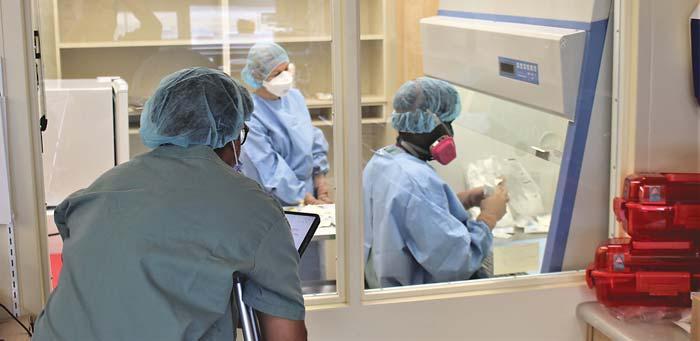
units (ADUs), re-packaging medications into unit doses, and compounding sterile preparations.
“Since these nurses were already trained and proficient in sterile compounding, the logical next step was to delegate chemotherapy preparation under pharmacist supervision.”
Pradhan emphasizes that many small hospitals lack pharmacy personnel, forcing hospital administrators to develop creative solutions to ensure patients receive their medications, including chemotherapy. Such is the case at St. Joseph’s General Hospital in Elliot Lake, where a trained chemotherapy nurse prepares the chemotherapy in the morning, and then administers the regimen in the afternoon.
Fortunately, Pradhan is one of few hospital pharmacists who has been involved in chemotherapy for over 20 years and kept
up his knowledge and skill in preparing chemotherapy.
“I came from an era of pharmacy where pharmacists were much more hands-on in sterile product preparation, including IV admixtures, parenteral nutrition, and chemotherapy,” he explains. “As the profession evolved, and rightfully so, registered pharmacy technicians took on chemotherapy preparation and verification. However, I made a conscious effort to keep up my skills, often acting as the second checker for chemotherapy and occasionally even preparing it myself, while having a pharmacy technician to observe me.”
While confident in his sterile compounding skills, Pradhan sought expertise in the regulatory framework governing hazardous sterile compounding – the National Association of Pharmacy Regulatory Authorities (NAPRA) Model Standards for
Pharmacy Compounding of Hazardous Sterile Preparations.
These standards were developed following Dr. Jake Thiessen’s independent review of cancer drug preparation, commissioned after 990 patients in four Ontario hospitals received lower-than-intended doses of chemotherapy drugs in what became known as the diluted chemotherapy scandal. The majority of pharmacy regulators now use the NAPRA compounding standards to assess hospital pharmacy compliance during annual accreditations.
Expertise in sterile compounding compliance: This is where Rebecca Lynch’s expertise became crucial. As the sterile compounding expert at NTS, Lynch brings a deep understanding of the NAPRA Model Standards for Compounding, ensuring the highest level of safety and compliance in chemotherapy preparation. Her commitment to best practices extends beyond regulatory requirements, integrating United States Pharmacopeia (USP) guidelines –the foundation of NAPRA’s compounding standards- to enhance safety measures for those handling hazardous drugs.
Lynch’s 20+ year career spans community pharmacy, long-term care, hospitals, and academia. “There were no NAPRA compounding standards when I first started sterile compounding, and USP standards weren’t widely understood in Canada,” she recalls. “Over time, I witnessed significant advancements in practice standards, ensuring higher quality and safety in sterile compounding.”
After working in a NAPRA compliant pilot facility, Lynch decided to dedicate her
The role of technology and intelligent automation in healthcare
BY BOYEDE SOBITAN
In recent years, advancements in new technologies and artificial intelligence (AI) have sparked widespread discussion across industries, significant investments, and speculation about the potential transformative impact these technologies will have on businesses and society at large.
While all industries will likely be reshaped in some way, few appear as ripe for transformation as the healthcare sector.
There are a few reasons for this. For one, the healthcare sector remains disproportionately behind the technological adoption curve, due in part to the highly regulated nature of the industry. Additionally, the sector needs solutions to address challenges such as rising demand, costs and persistent operational inefficiencies.
These urgent challenges risk causing widespread provider burnout, diminishing experiences, and a decline in the quality of care and patient outcomes.
But how, more specifically, can we expect technologies that power automation to address these issues and ultimately transform the healthcare industry for our modern age?
Optimizing asset tracking: Being able
to effectively track and manage all assets in a healthcare setting is crucial. If critical supplies are unexpectedly out of stock or can’t be located in a timely manner, it can lead to the delay of life-saving procedures or otherwise negatively impact patient safety and outcomes.
Asset tracking and inventory management have become increasingly pervasive challenges throughout the healthcare sector as most institutions continue to rely on manual, paper-based administration processes.
According to Zebra’s latest hospital vision study, 77 percent of healthcare decision-makers agree clinical staff at their organizations spend too much time locating medical equipment, supplies and materials when needed. In addition, 84 percent say automating and digitizing tracking systems at the point of care is a priority for their organizations, while 80 percent believe AI would enhance inventory accuracy and visibility.
To address these issues, healthcare facilities are increasingly turning to automated inventory oversight and replenishment technologies. By attaching unique radio frequency identification (RFID) tags on all physical assets and integrating this data into software manage-
ment systems, providers gain real-time visibility into inventory status and location. This also enables automatic replenishment of supplies before they run out.
Similarly, ensuring the availability and integrity of surgical equipment is paramount to keeping patients safe and maximizing positive outcomes during invasive procedures. However, most existing location and quality control
77% of healthcare leaders agree that clinical staff spend too much time locating equipment and supplies.
processes also remain highly outdated and reliant on manual inspection, leaving room for unforeseen complications and human error.
Again, this is a challenge that is actively being mitigated by advancements in AI and automation, particularly through the development of fixed industrial scanners (FIS) and machine vision (MV) technology.
For example, Zebra Technologies’ AIpowered deep learning-based OCR and barcode technologies automate the
process of scanning and processing the data associated with the unique QR codes and serial numbers on surgical equipment, improving the accuracy and efficiency of the inventory process.
Additionally, with Zebra’s high-resolution CV60 Machine Vision cameras, providers can initiate automated surface and anomaly detection, enhancing their ability to evaluate and classify potentially harmful corrosion levels on surgical equipment more accurately.
Leveraging healthcare-grade mobile computers: Another major priority in healthcare today is the implementation of automation and computing solutions that offer high levels of both intelligence and mobility. Unlike other industries that can easily purchase commercially available smart tablets and basic software, healthcare organizations face additional requirements.
They must ensure these devices meet standards for capabilities and connectivity, as well as being optimized for durability and regular disinfection.
Healthcare-grade mobile computers aim to meet the safety requirements of care settings while streamlining nearly every healthcare workflow, whether in a
Maintaining high quality standards: Rebecca Lynch trains Tasifir Ndiaye on proper chemotherapy preparation, while Rahim Pradhan observes with an iPad and checklist for quality assurance.



As the largest digital health event in Canada, e-Health is the best place to grow your business, expand your digital health knowledge, and forge important connections with industry peers, vendors, and thought leaders—connections that spark collaboration, innovation, and real change. Join us at the Westin Harbour Castle Toronto from June 1 to 3 as we celebrate 25 years of networking and learning with the people and organizations driving change in Canadian health through information and technology. We will be talking about: AI-Powered Postoperative Monitoring Solution for Early Detection of Anatomic Leaks • AI-Driven Phenotyping to Stratify Patient Populations for Personalized Healthcare • Harnessing Epic Data to Cut Pediatric Anesthesia Emissions by 30% • One Patient, One Record, One System for multiple hospitals • Key Drivers of Privacy: Enabling the flow of PHI for better health for all • Integrating Pulmonary Function Testing into Medical Records: Enhancing Efficiency and Improving Healthcare Delivery • Leveraging AI Video Generation for Digital Health Training • Testing an Assessment Tool and Standardized Process for Virtual Care Development: A Design Thinking Approach • How AI-enabled self-management care models divert ALC traffic, reduce ED visits, and 911 calls • Empowering client engagement and enhancing experience through the development of a co-designed, AI-enabled Client Portal • Simplifying Parental Consent for School Immunization Programs with a Digital Consent Collection and Tracking Platform • Leading a Cultural Shift by Empowering Patients Through Access to a Unified, Regional-Scale Patient Portal • Co-designing implementation strategies for a suicide prevention app with clinicians, patient and care partners • Enhancing Forensic Patient Safety • Incorporating Patient’s Digital Preferences in the EHR: Impact and Lessons Learned • The AI Threat to Patient Data • Enhancing Security in Digital Health • Computer Assisted Coding: How this tool transforms clinical coding workflows • Healthcare Leaders Driving Innovation • Exploring real-life examples of how Generative AI is making a difference in Canadian healthcare • Collaborative Partnerships: An Essential Component in Digital Workforce Transformation • AI Applications in Healthcare: Enhancing Efficiency, Improving Care, and Empowering Clinicians • Much Ado aBOT Something - Standardizing EMR Data for Transmission Between Clinicians • Evaluating EMR interoperability across Canadian jurisdictions: A maturity model and roadmaps toward integration • Optimizing health data design and use in British Columbia through a patient-led interprofessional collective approach • A community-centred program using digital tools to advance health equity for multicultural and Indigenous communities • Expanding Canada’s first Regional Digital Twin - Driving Clinical & Digital Change for Improved Access • Digitizing Sickle Cell Disease Care - Reducing Inequities Across Emergency Departments • Digital Technology and Healthcare Human Resources; Patient Engagement and Empowerment • Enabling Clinical Best Practices Through Digital Referrals with Embedded CDS • Digital Referral Form standardization – a transformative and clinically informed co-design approach • Addressing Communication Challenges in Disconnected Indigenous Populations • Policy recommendations for enhancing health data interoperability in Alberta with broad application for Canada • Interoperability and Data Ownership: Lessons Learned from the Implementation of a Province-Wide Interoperability Solution • The impact of policy changes on virtual care use in Ontario: a population-based study • Virtual Care: Australian Learnings and Perspectives • Addressing the Urgent Gap in Emergency Rooms Through Virtual Care Collaboration • Machine Learning Classification of Mental Health and Addiction Calls in Paramedic Services • First Nations Community Paramedicine Service • Using AI/ML to translate youth language into a clinical context to support frontline staff • Using Artificial Intelligence and Machine Learning to Automate Injury Prevention Surveillance Data • Delivering Health AI Literacy: A Principle-Based Framework for Enhancing Practical AI Competencies Among Healthcare Professionals • The Current State of Interoperability in Canada • Key Factors for True Interoperability: Lessons Learned during a Provincial Interoperability Journey • Transforming Clinical Documentation - Evaluating EHR-Integrated AI Scribe Technology in an Acute Care Setting • The Introduction of a HHR Dashboard to Improve Operational Excellence • Bridging Access Gaps in Chronic Pain Management with Patient-Centric Virtual Care and Telemonitoring • Streamlining Healthcare Access and Navigation with Province-Wide Digital Front Door Solutions • Provincial Framework and Committee for Addressing Physician Shortages in Mid-Sized Rural and Remote Hospitals • Virtual Nursing and Sitting to Elevate Safety and Add Much-Needed Capacity • Co-Designing Digital Health Tools to Minimize Burden and Improve Efficiency in Mental Health Care Delivery • Optimizing AI in Ontario Healthcare: From Point Solutions to Scale • Addressing Clinician Cognitive Load: the role of an AI-based “Easy Button” that NEVER hallucinates • AI Powered Pan-Canadian Conformance Program • Common Data Architecture is the foundation for data exchange standards – why FHIR isn’t enough • The Canadian Core Data for Interoperability: Drawing from International Examples to Advance Connected Care • Enhancing Interoperability in Health Care Facilities through a New Digital Infrastructure Standard • Digital Health, Equity, and Access in the Provincial Digital Pathology Initiative • Triaging Referrals to eConsult (TReC): Increasing Access to Endocrinology and Osteoporosis Care in Ontario • Evaluation of a secure messaging proof of concept pilot • Leveraging AI to Improve Accuracy in Medical Audio Transcription • Unlocking the Untapped Potential: The Power of Digital Twins in Healthcare • National Eye Data Repository for Primary Care Optometry Optimization and AI Innovation • Co-Created Principles for Organizational Digital Compassion in Health Care • An APP keeps the doctor away - leveraging digital tools for surgical patients • Optimizing virtual care: Lessons learned from a nurse practitioner-led virtual episodic care program in Ontario • Revolutionizing Healthcare in Ontario: Oracle Health’s Impact on Patient Care and Efficiency • Scalable, Sustainable, Essential: The Case for Virtual Primary Care in Canada • How Hybrid Care Models Drive the Quintuple Aim • Moving healthcare forward through modernization and collaboration: Practical insights from an OHT • Lessons Learned: A View from the Inside • Re-imagining Central Intake at Horizon Health: A Candid Conversation on the Digitization Journey • Digital Solutions for Homecare • AI Agents for Healthcare Technology - From Basics to Breakthrough • Transforming Primary Care: Unlocking the Potential of AI in Ontario • Revolutionizing Patient & Staff Safety: The Impact of Breakthrough Ambient Perceptual AI Technology • Topological Clustering of Complex Healthcare Data: Insights into Unmet Healthcare Needs Among Injured Patients • Use of Artificial Intelligence in Post 48 hour Discharge Calls • Passing Notes in Class • A New Program to Drive National Interoperability in Canada • From Notes to Insights: Enhancing Patient Care and Interactions through AI Documentation in Clinical Settings • Rapid Response: Fast-Tracking Early Warning System Success • Enabling Patient Access to Personal Health Information and Services Through a Digital Front Door • Supporting primary care clinicians in diagnosing and managing patients with anxiety disorders and major depression • Advancing Precision medicine: Pharmacogenomics testing with advanced Clinical Decision Support • Promoting equitable access to digital population-level mental health portals: Lessons learned from this collaborative initiative • Digital facilitators of the early implementation of a national crisis line • A Novel Virtual Walk-In Counselling Service for Mental Health Support for Children, Youth, and Caregivers • Supporting Complex Care Needs in Primary Care Through Virtual Care • Building Canada's Psychiatric Mental Health Care Workforce: Competency, Capacity, and Resiliency • Creating a More Interconnected Future of Health in Canada • AI for Better Health – AI Strategy & Governance Learnings • Provincial Clinical Registries: Bridging Fragmented Clinical Information Systems and Improving Health Information Interoperability • Lessons Learned from Building a Successful Data Exchange Network Strategy • Enhancing Emergency Access: Lessons Learned from the Virtual Urgent Nova Scotia (VUNS) Program • What is holding them back? Exploring barriers to patient portal activation • Evaluating the usefulness of a mental health chatbot for people with arthritis and diabetes • Streamline primary care and reduce administrative burden through provincial LOINC document standards: a grassroots success. • Pan-Canadian Health Workforce Data Dashboards to Support Planning • Empowering and engaging patients to support their kidney health and wellbeing through customized virtual resources • Digital Bridge: Supporting older adults with complex needs transition from hospital to home • From Hospital to Home: Enhancing Post-Surgical Recovery with Remote Patient Monitoring • Visit www.e-healthconference.com to learn more and register for e-Health25 coming to the Westin Harbour Castle Toronto from June 1 to 3, 2025.





Communication problems at the root of radiology errors,prof says
BY JERRY ZEIDENBERG
Unfortunately, mistakes happen in medicine – up to 100,000 deaths occur annually in the United States due to medical errors, according to studies, and a proportionate number happen in Canada, as well.
While medication errors and misdiagnosis are major root causes, the top cause of preventable errors are communication breakdowns.
“The Joint Commission found that 65 percent of SREs [serious reported events] reported to them are due to communication errors,” said Dr. Bettina Siewert, assistant professor of radiology at the Harvard Medical School, in a presentation at the RSNA conference in Chicago last fall.
In her address, she focused on radiological errors and asserted that mistakes in communication are the major cause of errors there, too.
“In our own hospital system, 56 percent of radiology errors were due to miscommunication,” she said.
She then went on to analyze these errors and to recommend ways of reducing them.
Dr. Siewert stated that because of communication errors in radiology, patients will have unnecessary radiological exposure, delays in the diagnosis of a malignant finding or unnecessary surgical intervention.
“Even a delay in a benign development is not a minor event,” she said. “A benign result in breast cancer, for example, could have a grave impact on a patient who was worried and anxious all along.”
Also, additional follow-up imaging is not only harmful to the patient but of high cost to society, she said.
“The effect on patients is severe and is completely underestimated.”

Moreover, she said that patients feel disrespected and see healthcare providers as incompetent, and not being able to communicate. “Which they feel is part of our job,” she noted.
In the case of transcription errors, patients feel that radiologists are not paying attention and are not doing a thorough job.
This leads to a loss of trust in the medical system – with some patients leaving the healthcare system altogether.
“Our referring physicians also lose trust, and send their patients elsewhere,” she said.
Dr. Siewert pointed out that communication errors also affect workflow efficiency. It takes extra time and effort to remediate errors in reports, for example, and to reschedule patients for exams or get a patient in as an add-on.
“This is something we can ill-afford in these times of short staffing,” she said.
Much of this work, moreover, falls on the shoulders of QA managers, who deal with incident reports and patient complaints.
“While service recovery is possible, it takes an inordinate amount of time,” she stated.
And of course, communication errors lead to malpractice risks.
“Eighty percent of malpractice cases have a communication component,” said Dr. Siewert. “Jurors do not want to hear that a radiologist was too pressed for time to communicate for five minutes to a referring physician,” she said.
Nevertheless, the communication process in radiology is quite complex. From ordering the test to scheduling the exam, performing it, interpreting and relaying the results, multiple staff are involved. “There are many interchanges that are happening,” observed Dr. Siewert.
In her own department, for example, 30
percent of the communication errors occur at the performance of exams, and 48 percent occur with result communications.
“Errors at the time of ordering or in postprocedural care were less common,” she said.
When do errors occur in terms of who speaks to whom?
She noted that handovers are the most vulnerable times.
Communication between radiologists and referring physicians are the most vulnerable to communication errors, she said, followed by technologists and transport staff.
Communication between radiologists and technologists is also a pain point.
“Awareness of these miscommunications is needed when we are trying to avoid them,” she said.
What are the types of communication errors in radiology, she asked. Most commonly, they consist of:
•Missing information or incorrect information
•Lack of a closed loop [ensuring that information gets to the intended person]
•Key individual was not contacted
Dr. Siewert said one way of counteracting these mistakes is by using human factors in engineering. “This has been shown to improve many aspects of healthcare and has been used to reduce communication errors.”
Examples of effective solutions include:
•Checklists, to ensure that all information is included in a report
•Closed loop systems, to ensure that the appropriate people have been contacted
•Standardization
Particularly effective are “forced function” solutions in closed loop systems. They ensure that all necessary information has been included and that key individuals have been contacted.
Niagara Health improving ultrasound efficiency with Kailoflow
Niagara Health is the first hospital in Ontario to implement KailoFlow, a webbased software that’s designed to improve the way ultrasound data is recorded and shared.
Currently in use for obstetrical (OB) ultrasounds, the system automates the process, reducing manual tasks, minimizing errors and making the entire process more efficient for sonographers and radiologists.
OB ultrasounds, by nature, require numerous measurements of fetal development, maternal health and other critical factors. Previously, sonographers manually recorded these measurements during the exam.
Afterward, they were transcribed into a report for the radiologists, who would then dictate the data into the final report.
With KailoFlow, these measurements are automatically captured, directly feeding them into the radiologist’s report. This digital process reduces the use of paper worksheets and removes the potential for transcription errors, improv-
ing accuracy of data, efficiency and time.
Dr. Gordon Cheng, Radiologist at Niagara Health, was a key supporter of KailoFlow’s implementation.
“We wanted a system that could give us more reliable and timely information,” said Dr. Cheng. “KailoFlow helps reduce the time it takes to get the data to the right people, and it does so with better accuracy, which ultimately benefits the patients we serve.”
Using an automatic data entry system significantly cuts down on the time radiologists spend transcribing numbers, allowing them to focus more on reviewing ultrasound images. In addition, KailoFlow’s technology can highlight abnormal values, drawing attention to potential pathology. Looking ahead, there are plans to integrate artificial intelligence (AI) into the system, which would further enhance its diagnostic capabilities.
One of the key benefits of KailoFlow is its ability to be customized to meet the specific needs of the hospital. The system is easy to adapt to existing workflows, which made it a smoother transition for staff.
“KailoFlow fits well with how we work,” says Dr. Cheng. “The system is easy to use and can be customized to meet our specific needs, which has allowed us to implement it without disrupting our daily operations.”
The system has been well-received by staff who appreciate the time saved by automating data entry, allowing sonog-
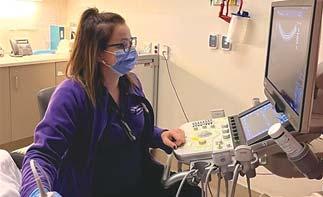
raphers to spend more time focusing on patient care rather than paperwork.
“We are always looking for ways to improve our workflows to improve patient care and staff experience,” says Janice Feather, director, diagnostic services. “KailoFlow helps us by enhancing the
software
accuracy of ultrasound results and speeding up the entire process. Being the first to implement this technology underscores our commitment to healthcare innovation.”
Vice-president of North America at Kailo Medical, Jessica Wilson, highlights the system’s role in streamlining workflows and improving the quality of shared information.
“We’re thrilled to partner with Niagara Health to bring KailoFlow to the forefront of ultrasound diagnostics,” said Wilson “Our goal is to make the ultrasound process more efficient while ensuring the data shared is of the highest quality. This collaboration is an important step toward enhancing patient care.”
KailoFlow is already having a noticeable impact at Niagara Health, paving the way for future applications across a broader range of ultrasound exams including abdominal, breast, cardiac and more.
“We’ve seen the positive effects KailoFlow has had on OB ultrasounds, and we’re excited about expanding its use in other areas,” said Feather.
With KailoFlow, measurements flow into reports.

Read
Canadian Healthcare Technology, published eight times per year, is sent free of charge to managers of hospitals and clinics, and executives in nursing homes and home-care organizations. Qualified subscribers need only periodically renew their subscription information to ensure continued delivery of the magazine. Please take a minute to complete your renewal and make sure Canadian Healthcare Technology keeps coming to you – absolutely free.
ARE TWO WAYS YOU CAN SUBSCRIBE:
COMPLIMENTARY SUBSCRIPTION REQUEST
(PLEASE PRINT)
Your organization’s business or industry?
Hospital
Health region
Long-term care institution
Home care Clinic
Computer or software vendor
Telecommunications vendor
Medical
VAR or systems integrator
Education
Finance/insurance
Consulting/legal
Public relations
Other
If you are employed by a hospital, which of the following categories would best apply to you?
CEO/President/VP/Executive Director
Finance
MIS
Medical Director
Physician
Purchasing
Nursing
Pharmacy
Radiology
Pathology & Laboratory
Human resources
Health records
Public relations
Quality assurance
Other
When everyone’s problem becomes no one’s problem, the patient pays the price
Incomplete or outdated IT systems in healthcare can contribute to delays and poor outcomes.
BY ROBERT SMITH
Healthcare systems today face a critical challenge: a proliferation of half-built digital bridges. These bridges – intended to connect vital information, processes, and care –remain incomplete, leaving patients and clinicians stranded in gaps that undermine safety and efficiency.
Despite significant investments in digital transformation, outdated technology and siloed systems continue to add administrative burdens rather than alleviate them.
This fragmentation is not just inconvenient – it comes at a steep cost. Across the NHS in the UK, mistakes and inefficiencies contribute to 860 preventable deaths annually and waste £14 billion, according to the report, National State of Patient Safety 2024.
With over 100,000 clinical vacancies, the system cannot afford to squander clinical expertise on administrative tasks that technology could handle more effectively.
The impact of fragmentation: The NHS in England has ambitious goals to reduce waiting lists and increase appointment availability. However, these targets are frequently undermined by incomplete digital systems that fail to deliver the anticipated efficiency.
Consider the workflow of District Nurses in England. During a recent observation, nurses entered patient information into an Electronic Patient Record (EPR), expecting it to automatically populate referral and care continuation forms. Instead, the system did “half the job,” requiring manual re-entry of data.
This inefficient process, which can take anywhere from 10 minutes to an hour per form, wastes valuable time. Some nurses estimate they could see 10 to 20 percent more patients per shift if their EPRs were better aligned with their way of working. Across the healthcare system, these inefficiencies create enormous opportunity costs, directly impacting patient care.
Referrals offer another stark example. Narek Sargsyan and colleagues, writing in the British Journal of Surgery, found that 22.6 percent of urgent cancer referrals are incomplete, causing an average five-
day delay in cancer diagnosis pathways. These delays can mean missed opportunities for timely intervention and better outcomes, underscoring the human cost of fragmented systems.
A case of automation falling short: The risks of half-built automation are starkly illustrated in a recent cancer referral case:
•A general practitioner (GP) and an artificial intelligence (AI) tool correctly flagged a male breast cancer referral as urgent (commonly referred to as “2WW” in England, meaning two-week wait).
•However, the system – involving processes and technology – failed the GP and patient by neglecting to ensure mandatory blood tests were completed.
•No automated validation flagged the oversight.
•Multiple GP appointments were wasted attempting to resolve the issue.
•Emails highlighting errors became the primary patient communication in the NHS App, before the patient received a phone call.
•Ultimately, there was a 12-day delay in starting the urgent cancer pathway.
•Compounding the issue, the last update to the patient’s information was recorded in 2017.
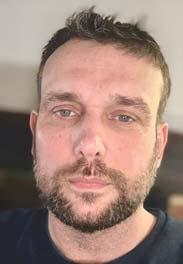
Frustrated by delays, the patient turned to private healthcare and received an “all-clear” diagnosis within 36 hours. The private pathway required no piecemeal processes – just a streamlined “Straight to Test” approach.
This example highlights how fragmented digital systems, and half-automations can inadvertently create additional steps, delay care, and compromise patient safety.
The paradox of shared responsibility: Unwarranted variation in care exposes a troubling paradox: when everyone owns part of the problem, no one has full responsibility for solving it. Multiple stakeholders – clinicians, administrators, and hospital trusts –play vital roles in the patient journey.
FYet, without end-to-end assistive technology to bridge these roles, critical steps are often overlooked, and patients ultimately suffer the consequences.
Agentic Care Pathways – Completing the bridges: One promising solution is Agentic Care Pathways, which go beyond traditional EPRs and half-automations to actively participate in clinical workflows. Unlike conventional systems that half-digitize existing inefficiencies, Agentic Care Pathways can:
•Provide real-time personalized clinical guidance to ensure referrals are complete and appropriate.
•Use AI automation and validation to reduce repetitive tasks and flag omissions early.
•Offer proactive patient and practitioner communication, reducing confusion and building trust.
•Manage entire care pathways, integrating seamlessly with EPRs, radiology, and lab systems for smooth patient experience.
These pathways leverage continuous feedback loops – like aviation’s systematic learning approach to safety. Near real-time data enables timely interventions when guidelines are not followed, fostering ongoing improvement cycles that reduce errors and delays.
A call to action: The goal is to create a healthcare environment that mirrors the safety and efficiency of high-risk industries. Rather than layering on additional bureaucracy or piecemeal automation, healthcare reform must focus on removing friction and building complete systems.
With seven million patients waiting for treatment, half-built bridges are a cost the system cannot afford – and one that patients should never have to bear.
By ensuring these bridges are completed –through process reengineering, end-to-end connectivity, and the transition to manage-by-exception approaches enabled by Agentic Care Pathways – meaningful reform can be achieved in healthcare.
The anticipated results include administrative relief, improved clinical outcomes, restored trust in the system, and a renewed focus on patient-centred care.
Robert Smith is the Founder and CEO of Healthcare CoPilot, a pioneering company dedicated to transforming healthcare through innovative technologies like Agentic AI. He is based in the UK.
How Canada could improve its medtech capabilities
aezeh Shekari, a distinguished scientist from Iran, embarked on her Canadian journey in 2023 under the Startup Visa Program. Collaborating with her advisor, Saeed Zeinali, she delved into Canada’s burgeoning medical technology landscape.
With a background in molecular biology, Faezeh envisioned revolutionizing in-vitro diagnostic devices through her company, Celer Diagnostics.
Saeed, an advisor at Manitoba Technology Accelerator and founder of NextStars (www.nextstars.io), played a pivotal role in shaping
Faezeh’s entrepreneurial vision, providing invaluable insights into launching a medtech startup in Canada.
Despite her company’s potential, Faezeh encountered significant challenges as she tried to establish herself in Canada and work towards commercialization of her startup. Canada’s medical technology market is poised for significant growth, expected to reach $22 billion by 2029. Growing demand for innovative healthcare solutions, driven by an aging population and healthcare infrastructure advancements, is fueling this growth.
However, medtech startups face numerous challenges that can significantly impact their growth and potential to make a lasting impact. The
Medtech startups face numerous challenges that can significantly impact their growth.
experience of Celer Diagnostics has been no different. Particularly as an immigrant entrepreneur, the journey as a medtech founder has not been smooth.
Experiencing these challenges; Faezeh and Saeed decided to study the market and explore if other startups in the ecosystem face similar issues and found that, despite Canada’s medtech potential, the ecosystem lags in key areas hindering growth Addressing the challenges: Canada boasts a vibrant ecosystem for startup companies, offering robust support systems and access to top-tier talent and resources. However, some startups, despite their Canadian origins, have chosen to relocate or expand their operations to the United States in pursuit of ex-
Robert Smith
Perfecting the AI scribe consent process: Bringing all involved onboard
BY MAHSHID YASSAEI
Iwas speaking at a conference at Western University recently, sharing an impressive fact: over 99 percent of patients are comfortable with their clinician using an AI scribe. It’s true – the vast majority of patients are comfortable with this technology. But then, someone in the audience raised their hand. They were visiting their doctor that morning and when faced with the question, they refused an AI scribe. They were worried about accents being misunderstood and data breaches.
For me this was a moment to reflect that our mission isn’t just about numbers, it’s also about recognizing an opportunity. How can we bring that last 1 percent on board and ensure the 99 percent feel fully informed, respected, and heard?
Let’s explore how to make the consent process not just a formality, but a chance to address concerns and build trust.
Key ingredients:
•Clarify benefits to the patient: Create a concise infographic explaining AI scribes. What do they do? How do they enhance patient care? Patients should know the benefit they are opting out of. Consider the diverse needs of our multicultural population in your explanations.
•Addressing worries: Talk about accuracy of the AI Scribes, doctor’s accountability to validate the note before putting it into their chart, and data security. Tell them how their data is processed and stored. It’s like answering FAQs before they’re even asked.
•Options on the table: Clearly outline alternatives if a patient opts out of AI scribe use. Importantly, explain how this choice might impact their clinical experience, ensuring patients make informed decisions aligned with their care preferences.
•Transparency: Make your data protection policies clear and accessible. Go beyond the typical ‘click to agree’ model, ensuring patients truly understand how their information is safeguarded.
•Take-Home info: Provide take-home materials in multiple formats – printed leaflets, emails, and links to online resources. This multi-pronged approach caters to diverse patient preferences.
Choosing your approach: Opt-in or Opt-out? We are seeing different clinics approaching the consent gathering process, either as an opt-in process or an opt-out process. This is an important decision to make, which will have an impact on the consent rate and the trust with patients. Here is a brief comparison of opt-in vs opt-out process for consent gathering.
Opt-in:
•Patients actively say “yes”
•Builds trust
•Respects patient choice, but it might mean fewer people join in, and it takes more time to explain.
Opt-out:
•More people end up participating
•It’s quicker for healthcare providers, but some patients might feel they didn’t really choose.
We suggest Opt-in. Yes, it’s more work, but it’s worth it for the trust you build. To make Opt-in easier, give information early; show how it works; and make saying “yes” simple.
Pro Tip: We suggest you get a written consent the first time they come to the clinic and confirm verbally for follow ups.
Empowering consent – Tali AI’s approach: In the spirit of advancing ethical AI adoption in healthcare, Tali AI has developed a comprehensive library of consent-
gathering resources. These materials, accessible through the Tali app, are designed to streamline the consent process while ensuring thorough patient understanding.
Recognizing that informed consent is crucial regardless of the specific AI solution used, at Tali we have made these re-
sources publicly available to all healthcare providers, not just our customers.
Healthcare professionals interested in accessing these resources can reach out to Tali AI directly, and we are always happy to help.
Mahshid Yassaei is CEO of Tali AI.


Hands-on nursing needs hands-free communication

Introducing the Sync Badge, our next generation hands-free, wearable communication device.
built-in panic button.



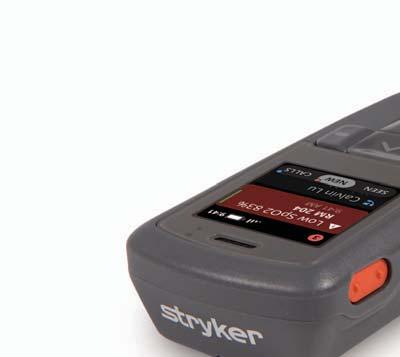

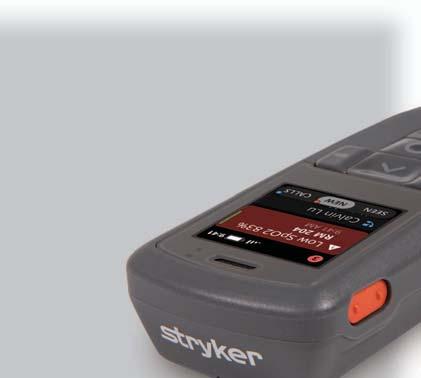
Experience the Sync Badge at eHealth 2025.

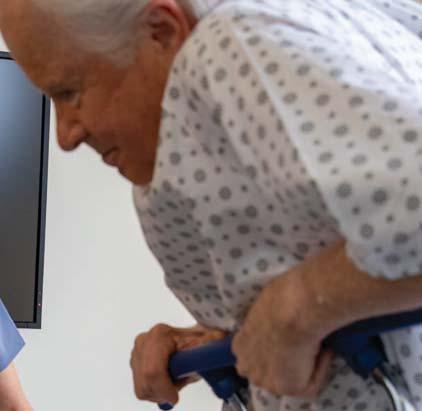

Scan or click to learn more

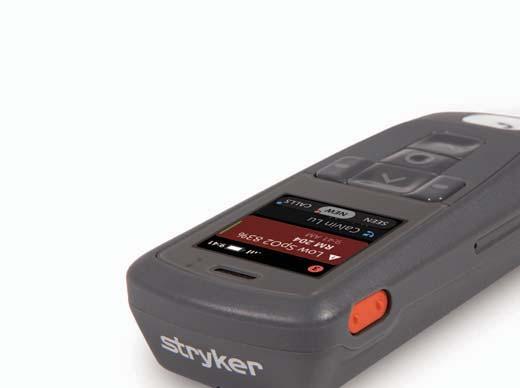



More hospitals and medical centres are creating AI governance models
The models help ensure that AI is used in an ethical way – and that humans are in charge.
TBY DIANNE DANIEL
he Ottawa-based Children’s Hospital of Eastern Ontario (CHEO) saw the potential of AI but also understood the need for great responsibility. Meanwhile, CHEO Research Institute experts were developing AI solutions that demonstrated positive clinical impact but lacked a structured pathway towards implementation.
The two entities decided to collaborate last year and within months delivered Leading Responsibly, a framework of six main principles to guide the use of AI at CHEO, whether the solutions are bought from a vendor or built in-house.
“It was this magical moment where there was appetite and capacity and we jumped on it,” said CHEO project director, AI, Merryn Douglas. She calls the effort a “sprint” that also benefitted from knowledge sharing with other groups and healthcare organizations.
The six principles that make up CHEO’s framework are summarized as Intentional, Accountable, Inclusive & Equitable, Trustworthy, Agile and The Right Fit. Each one outlines steps to ensure that any AI solution used within the hospital – whether embedded as a component within a tool or a standalone solution – is appropriately evaluated and managed throughout its lifecycle.
Part of the goal was to demystify the technology. “Anyone can have AI at their fingertips,” said Douglas. “We want to make sure everyone has the information they need to use it responsibly and to know when to stop to ask a question.”
The framework’s concept of being intentional is about keeping humans in the loop as AI solutions are developed and rolled out. AI tools are good at providing in-depth information to support decision making, but ultimately, it’s the providers who retain control.
“It’s really about strengthening that human connection that’s providing the care and helping providers perform their duties better,” said CHEO Research Institute’s director of research informatics, AI and technology, Ivan Terekhov. “We’re not here to replace everyone with robots. It’s about enhancing our ability to provide care for the patients.”
ernance framework, they were prompted to question what they could do differently so that Quebec patients could also benefit from the technology. “It helped us to think through that problem and address it before the full rollout into a clinical space,” said Terekhov.
As part of the trustworthy principle, CHEO aims to leverage existing privacy and security processes so that patient information remains protected, end-toend, in any AI solution. That includes knowing what data is being accessed, how AI models are trained and what, if any, data is being shared.
Agile means AI can never be a “set it and forget it” solution but rather one that requires constant attention and revision. Even the framework will be updated, said Terekhov, based on information gleaned as more algorithms come to the table for assessment. Finally, the framework recognizes that not every problem requires an AI solution. “It’s the ‘in vogue’ thing that’s happening right now in the world, but it doesn’t mean we have to shoehorn AI into ab-
“Like any new technology, you want to find the balance between harnessing it for good while maintaining safety, or what we might call responsible and ethical AI, at its core,” she said.
Signal 1 addresses governance by providing automated tools for monitoring and reporting on AI models, enabling health systems to apply rigorous standards without the need to put resources in place, and support a great deal of manual effort.
For example, the platform includes a live monitor to display the performance of each AI model deployed, alerting users whenever performance degrades beyond a pre-determined point. At that point, users can access raw data to try to fix or retrain their model.
“Hospitals are used to risk management,” said Lederman. “It’s just a matter of understanding how those risks arrive with AI and then applying a framework for how likely this is to cause a problem and how severe that problem is.”
Signal 1’s platform also generates detailed model validation reports that can be customized to adhere to any AI governance framework and measure different metrics depending on the nature of the model (operational or clinical), including bias.
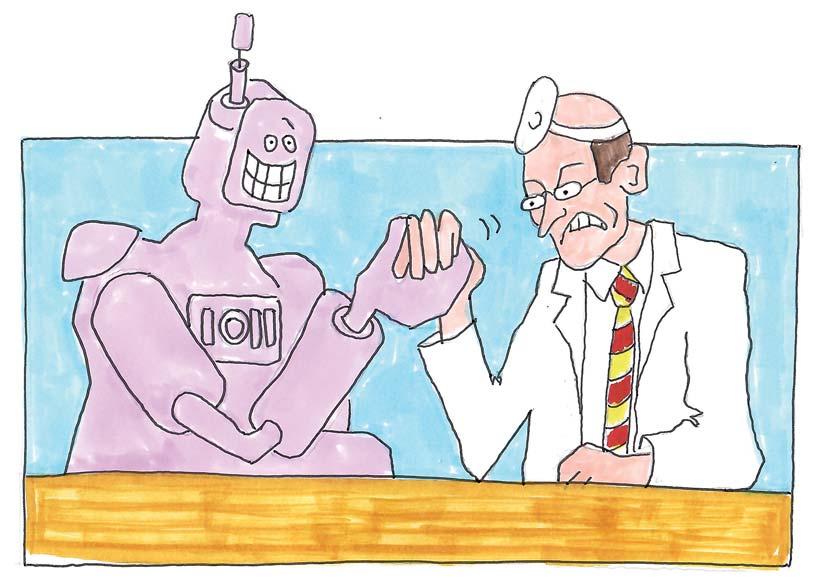
solutely everything,” he said. “It has to be the right problem where an algorithm might be performing something a human can’t do or is enhancing the ability of a person to make a decision or do a particular task.”
For example, when validating a model designed to detect patients at high risk for clinical deterioration, an automated report may come back indicating that 80 percent of men were accurately classified compared to only 68 percent of women. The next step would be to investigate what is causing that particular AI model to miss more women than men. “You might speculate that women have fewer tests taken and as a result have fewer lab results feeding the model … or is it that there weren’t enough women represented in the historical data to pick up those patterns (when the model was built)?,” explained Lederman.
Accountable refers to the fact that every algorithm is assigned an owner who is responsible for evaluating and monitoring its performance. The framework also addresses the need to have “tough conversations” upfront to guard against bias.
For example, CHEO’s ThinkRare solution – expected to go live this spring – applies AI to help with early identification of rare genetic diseases in patients.
During the tool’s evaluation phase, the framework helped to surface an important consideration: CHEO serves patients from both Ontario and Quebec but because the genetic sequencing test applied in the model wasn’t funded for Quebec patients, they were missing out.
Because inclusivity and equity is part of the gov-
Founded in 2022, startup Signal 1 – which codevelops healthcare applications with Torontobased St. Michael’s Hospital – is taking a fully integrated approach to delivering AI, providing both the technical infrastructure and the tools required to put models into production. Early on, the company identified a gap between building and validating models on paper and monitoring them in a live environment.
“I think everybody believes in the potential that AI tools can have for healthcare and at the same time, people are worried about using them in a way that is safe, ethical and effective,” said Signal 1 cofounder and COO Mara Lederman. Users are primarily concerned about accuracy, bias and performance degradation.
Another important aspect of AI governance addressed by Signal 1 is enterprise model management, which can be likened to inventory management. Every model is registered on the platform, including details on when it was built, who built it, when it was approved, what the initial performance was like and how it is performing now.
Signal 1 is currently working with major healthcare organizations like Trillium Health Partners and Unity Health, and it is garnering attention from other provinces, as well. Users either access the platform directly to manage and monitor their AI solutions in-house, or contract with Signal 1 as a service provider.
“For a lot of hospitals, if you ask them what AI models they have running, they say they don’t actually know, or that they have it in a spreadsheet somewhere,” said Lederman. “We believe tools for management, monitoring and reporting are the things that will unlock AI at scale, that will turn AI from a couple of science experiments inside hospitals to a
core piece of software that impacts hospital operations.”
INOVAIT, the Canadian image-guided therapy and artificial intelligence network established in 2020 by Sunnybrook Research Institute and supported by Canada’s Strategic Innovation Fund, is working to develop AI technologies that will revolutionize the diagnosis and treatment of disease and improve patient outcomes.
In February 2025, the network released a framework intended to help healthcare institutions to “confidently and responsibly engage in health data licensing with ethical private sector companies.”
Understanding that Canada is uniquely positioned to lead the development of AIenabled technologies due to the consistent way diverse health data is collected here, the INOVAIT framework lays out eight principles for safe, ethical and trustworthy Canadian health data licensing.
They are: transparency, de-identified or anonymized data, acceptable risk, ethical partners, benefits public good, Indigenous data sovereignty, oversight and governance, and responsible stewardship.
The over-arching goal is to provide a reference point for groups who want to share data across the country, including hospitals, clinics, public health teams or administrators, said Dr. Brian Courtney, an interventional cardiologist, inventor and clinician-scientist at Sunnybrook Research Institute. He is also co-chair of INOVAIT’s Health Data Sharing & Governance Working group.
“We need to have a framework that allows us to do the good parts of what is possible (with AI) while having boundaries that provide protection to make sure the potential harms of this are significantly minimized,” said Dr. Courtney.
The multidisciplinary process to develop the framework, which can be downloaded at www.inovait.ca/data, included consultation with experts in ethics, privacy, clinical care, industry, Indigenous health, patient advocacy, health technology and data governance, as well as a roundtable with health data leaders from six provinces.
Stakeholders considered what would be practical, implementable and reasonable, and went through a high-level risk-benefit analysis.
“This working group came out of a commitment to the federal government that we made, saying we think we can do great research in the new technologies that are needed to improve healthcare, but we’re not just going to be technology centric; we’re going to provide a framework so this can be done in a way that the public will trust,” said Dr. Courtney.
For projects using anonymized data where the risk of re-identification is very low, applying the framework as a checklist might be reasonable. In cases where there’s a higher specificity of information, meaning it might be easier to identify patients if data anonymization isn’t entirely successful, more rigid processes may be required, such as establishing an independent review board.
“Similar to a research ethics board, it would review the application for the data sharing agreement and apply these princi-
ples, and then determine: Are there any other safeguards? Is there any auditing that’s required? Are there any covenants that need to be made? What are the consequences of a data breach?” he explained.
In other circumstances, the framework may require the establishment of federated learning systems, where instead of sending data back and forth, the processing of highly confidential and sensitive data
would occur in an extremely secure data trust and only the algorithms would go back to the interested party.
The first step was to draft the principles and framework. The next step is action, using the framework to develop template legal documents to reduce risks associated with health data sharing, for example, or to identify what governance and oversight should look like.
“When we started doing this, it felt a little bit like we were doing this out of an ethereal concern. Is it overly academic? Who are we as a group to get together to tell other people how to do this,” said Dr. Courtney. “But as we moved forward with it, we got a lot of support from people saying this is an issue, they don’t know how to grapple with it, but they want to be able to do the data sharing.’

•
Implementing AI in your Practice





BERTA: A flexible and cost-effective AI scribe for doctors in Alberta
BY LINDSAY SYLVESTER
EDMONTON – Meet “Berta”, an aptly named portmanteau combining “Alberta” and BERT, a foundational Large Language Model. Berta is an open-source AI scribe designed to reduce administrative work so clinicians can focus on what matters most – patient care.
Developed by a team of researchers and clinicians at the University of Alberta, this AI-powered tool helps streamline medical note-taking in the emergency department while ensuring patient data stays secure, local, and under physician control.
Collaboration is key to the AI Scribe/Berta project, bringing together a multidisciplinary team with expertise in artificial intelligence, clinical workflows, and healthcare quality improvement.
Led by Jake Hayward, an emergency physician and assistant clinical professor at the University of Alberta, the team includes Michael Weldon, emergency physician and engineer; software engineers Jesse Dunn and Samridhi Vaid, AHS manager Kevin Lonergan, and emergency department physicians Henry Li, Jeffery Franc, and Jaspreet Khangura.
The crew also includes Ross Mitchell, professor at the University of Alberta, AHS chair in AI in Health and Amii fellow & Canada CIFAR AI chair.
This work is supported by a $1 million Health Care Unburdened Grant, funded by the Canadian Medical Association, MD Financial Management, and Scotiabank.
The two-year project focuses on easing physicians’ documentation burden, beginning with a pilot in the emergency department at the University of Alberta Hospital, Red Deer General Hospital, and the Royal Alexandra Hospital in Edmonton.
How the AI scribe works: The AI Scribe
uses Automatic Speech Recognition (ASR) and Large Language Models (LLMs), similar to those behind popular tools like ChatGPT, to transcribe and summarize conversations between physicians and patients. It generates draft medical notes that include:
•History of presenting illness
•Past medical history
•Medications
•Physical exam findings
•Diagnosis and treatment plan
Crucially, the physician maintains complete control, reviewing and approving every note generated by the AI Scribe before it’s integrated into the patient’s electronic health record.
The AI Scribe is designed as a support tool, augmenting and not replacing clinical expertise and judgment.
Initial feedback on the prototype has been overwhelmingly positive. “Our prototype has already shown extraordinary results,” said Mitchell. “We’ve observed an increase in patient throughput per shift, a substantial reduction in documentation time, and notably, improved interactions between patients and their physicians.”
Three phases toward widespread use: The project is structured in three phases over two years:
•Refining the tool to ensure it meets the needs of participating Alberta emergency departments.
•Onboarding and testing: participating physicians are onboarded and provide feedback to mitigate any significant technical or capacity issues within the app.
•Piloting the system in emergency departments in three pilot sites located in Edmonton, Calgary and Red Deer.
Phase 2 of the AI Scribe/Berta rollout began in March 2025, employing a phased approach to gradually expand its use among 856 emergency physicians in Al-

berta. This strategy allowed the team to resolve any technical or capacity issues as more physicians joined the program. Before the official launch, early invitations were extended to a small number of physicians at various sites for onboarding testing and feedback.
Continuous evaluation and feedbackdriven improvements: The AI Scribe is part of a quality improvement initiative, focused on learning from real-world use and refining the system based on physician feedback. A formal evaluation pipeline is in place, beginning with human reviewers assessing accuracy and setting a baseline for performance. Over time, LLMs will help automate this evaluation process.
“The feedback loop is essential,” Mitchell said. “We’re not just deploying a static tool; we’re creating a dynamic system that evolves with the needs of our physicians. By capturing and acting on their input, we ensure the AI scribe remains relevant and effective.”
Participating physicians complete three surveys: a baseline survey before they start
using the scribe and two additional surveys. The team is also analyzing Epic EMR data to track changes in documentation time, the number of patients seen per shift, and note length. This information will help measure the tool’s effect on clinical efficiency.
Privacy, security, and patient consent: Data security and patient trust are at the core of the project. All patient data – including audio recordings, transcripts, and clinical notes – remains within Alberta.
“Maintaining patient trust is paramount,” Mitchell emphasized. “By keeping data local and adhering to strict privacy standards, we’re building a system that physicians and patients can rely on.”
Patient consent forms and data security policies are being developed to meet the same standards as Alberta’s electronic medical records. This ensures alignment with provincial privacy legislation and builds trust with both physicians and patients.
Why build a made-in-Alberta AI scribe? “A made-in-Alberta solution supports innovation in the province,” said Mitchell. “More importantly, none of the data leaves the province.” Mitchell noted additional benefits of developing an AI Scribe in Alberta rather than adopting an off-the-shelf solution:
•Data security and trust: All patient data stays in Alberta, ensuring privacy and compliance with local regulations.
•Feedback-driven improvements: Physicians can flag issues directly in the system. These cases are used to continuously refine and improve the tool.
•Cost-effective and adaptable: By using open-source models and Alberta-based infrastructure – such as Denvr Dataworks –the project reduces costs and avoids vendor lock-in. The system is designed to be scalable and adaptable as AI tech evolves.
Transforming primary care with AI: A collaborative strategy
BY SIMON LING AND ABBAS ZAVAR, MD
Since being founded as a subsidiary of the Ontario Medical Association over 20 years ago, OntarioMD (OMD) has supported primary care clinicians in adopting and leveraging digital health technology to increase practice efficiency and optimize patient care.
One of the most exciting, and most impactful, new technologies, is artificial intelligence (AI). Given its transformative potential, OMD has undertaken several initiatives in the last two years, including an environmental scan and the first-ever evaluation study of AI scribes in Ontario, to help identify opportunities and barriers to integrating AI solutions into primary care practice.
Through these efforts, OMD concluded that successful AI implementation in health care hinges on a strategy focusing on collaboration, implementation, and education.
Collaboration: The successful de-
ployment of AI solutions in primary care relies heavily on collaboration among stakeholders, including clinicians, patients, policymakers, technology vendors, regulators, and research institutions across clinic, regional, and provincial levels.
This fosters innovation in developing AI solutions tailored to primary care, addresses policy and regulatory gaps, and creates a scalable adoption framework. For example, OMD continues to leverage its digital health partnerships, established over a 20-year span, to engage with organizations (including the Ontario Medical Association, the College of Physicians and Surgeons of Ontario and the Canadian Medical Protective Association), to ensure tools, such as AI scribes, meet healthcare regulations and adhere to ethical standards.
A collaborative approach ensures AI solutions are implemented safely, ethically, and effectively, to enhance patient care and clinician workflows.
Another exercise is an innovation, or
living, lab – a platform, building on OMD’s existing EMR lab service, for exchanging knowledge, networking and co-designing AI technologies. To this end, OMD’s innovation lab is evolving toward an environment that enables the safe experimentation of AI tools, with a possible expansion for access to standardized training datasets and AI models
A collaborative approach ensures AI solutions are implemented safely, ethically, and effectively.
that reflect Ontario’s demographics. This will ensure alignment with clinical needs specific to local areas.
Implementation: Developing a solid plan, with change management support at its core, is essential to AI implementation. The first step is conducting pilots to assess effectiveness and inform adoption strategies, as was undertaken with
the 2024 clinical evaluation study of AI scribes in Ontario co-led by OMD with the eHealth Centre of Excellence (eCE) and Women’s College Hospital (WCH). In the case of last year’s study, the pilot approach confirmed AI’s potential to optimize clinical workflows and alleviate clinician burnout. It also highlighted the importance of testing to ensure safety, privacy, and compliance with healthcare regulations, and change management support, provided by OMD Advisors and the eCE Change Management team, to further facilitate implementation.
Education: As with any initiative, education is the key to success. The importance of providing clinicians and patients alike with the knowledge to understand and navigate AI technologies cannot be understated.
A comprehensive educational program, with webinars, conferences, and advisory services, not only helps to reduce the learning curve and facilitate AI adoption into clinical practice, but counters hesitancy towards its use.
Ross Mitchell
Telepharmacy helps remote hospitals keep chemotherapy satellites open
career to mastering and implementing these standards. Since joining NTS in 2020, she has focused on sterile supervision, conducting gap analyses, providing training, optimizing workflows, and enhancing quality assurance programs. She is particularly passionate about educating nurses and pharmacy assistants in northern communities to ensure they provide the same high-quality care as larger urban centers.
Keeping chemotherapy services local: Over the past two and a half years, the delegation program has expanded to five Northern Ontario hospitals. Lynch serves as the sterile compounding supervisor for three of them. For hospitals with an existing sterile supervisor, Lynch accompanies Pradhan for the initial assessments to provide additional sterile expertise and ensure compliance with NAPRA compounding standards.
Together, they conduct on-site visits, observe workflow, and provide support to ensure safety and compliance.
The collaborative approach between hospital staff and the North West Telepharmacy Solutions team has been instrumental in maintaining high-quality patient care.
Joan Mallyon, vice president and chief nursing executive of Dryden Regional Health Centre, praises Lynch’s contribu-
Technology and intelligent automation
CONTINUED FROM PAGE 10
large facility, a patient’s home, or an ambulance. These devices not only adhere to top speed and connectivity standards but are also designed to integrate with AIpowered automation solutions, offering a centralized hub for real-time access to both administrative and patient data.
Of course, mobile technologies in healthcare need not be limited to “traditional” computers and tablets.
In fact, perhaps one exciting development in healthcare today is the increasing use and efficacy of autonomous mobile robots (AMRs).
Consider Moxi, for example, an AIpowered, socially intelligent humanoid robot designed by Diligent Robotics with the support of Zebra Technologies to assist clinicians at hospitals with a wide range of non-patient-facing tasks.
Not only does Moxi save workers time and productivity by running patient supplies and delivering lab samples and medications, but its use of AI and machine learning algorithms allows it to quickly adapt to new environments and become more efficient over time.
A look to the future: While the integration of technology and automation in healthcare is still in its early phases, its potentially transformative impact on the industry and on the confidence, safety, and well-being of patients worldwide cannot be overstated.
Hospitals and providers that invest in technology will be more efficient, and will reduce clinical burnout, improve staff satisfaction, and enhance patient care.
Boyede Sobitan is Senior Manager, Product Management, at Zebra Technologies.
tions: “Rebecca’s depth of knowledge, accountability, and integrity are great assets to our team. Although she is not on-site daily, she is highly involved in our pharmacy operations and is a pleasure to work with.”
Last year, Notre-Dame Hospital in Hearst, Ontario, faced a potential chemotherapy program shutdown due to a pharmacy staff shortage. Chief nursing officer Dominic Morin explains, “One of our pharmacy technicians was going on an extended leave, leaving us with only one technician. Without a solution, our chemotherapy program would have had to shut down. Thankfully, we were able to train a pharmacy assistant in sterile preparation.”
Lynch facilitated the theoretical training remotely, while lead pharmacy technician
Medtech capabilities
CONTINUED FROM PAGE 14
panded opportunities and a more lucrative market landscape.
This strategic shift underscores the importance of addressing key challenges within Canada’s medtech startup ecosystem to retain and attract innovative ventures. By fostering an environment conducive to growth, collaboration, and investment, Canada can position itself as a global leader in medtech innovation while retaining its homegrown talent and expertise.
Medtech startups have unique needs and face specific challenges:
•Cumbersome regulatory approval processes: The regulatory approval process is essential and beneficial, ensuring that medtech products meet the highest standards of safety and efficacy. However, this rigorous process can also lead to extended timelines before revenue generation.
•Limited capital investments: Without partnerships with universities or access to venture capital, medtech companies struggle to secure government research funding. Additionally, due to complex regulatory approval processes, long revenue generation cycles deter investors, making funding even more difficult to obtain.
Recent trends show that venture capital activity has significantly slowed in 2023, largely due to macroeconomic uncertainties and corrections in public markets, further constraining funding opportunities in the sector.
•Insufficient wet lab facilities: Many medtech startups require ISO-certified wet labs, which are specialized laboratories equipped to handle various chemicals and potential wet hazards. However, one of the primary challenges faced by future medtech startups is the shortage of affordable private or co-shared laboratory spaces. Despite investment in Canada’s life sciences sector, there is a severe shortage across the country of specialized laboratory space needed by startups and scaling companies.
•Lack of adoption in Canada: Introducing new medical devices and technologies is often delayed due to complex approval processes and the challenge of integrating them into existing healthcare frameworks. Additionally, healthcare systems may re-
Luce Lamontagne provided hands-on training. After passing competency assessments, Pradhan and Lynch traveled to Hearst for an on-site assessment and delegation.
Morin emphasizes the program’s im-
Last year, Notre-Dame Hospital in Hearst, Ontario faced a chemotherapy crisis due to pharmacy staff shortages.
portance: “North West Telepharmacy Solutions’ support was invaluable in keeping our chemotherapy services local. Without this program, patients would have had to travel to Thunder Bay or Sudbury – re-
sist adopting new technologies, particularly when they require significant operational changes or substantial investments in training and equipment.
This reluctance to adopt new ideas makes it even harder for startups to succeed, causing many to look for opportunities in other markets where new technologies are adopted more quickly and easily.
Overcoming the challenges. The following steps are advised to surmount these challenges and cultivate a more supportive environment for medtech startups to flourish:
• Strategic advisory: Engaging with strategic advisors early on is crucial for medtech startup founders. These advisors offer vital help with regulatory issues, clinical validation, market strategy, business growth, fundraising, and hiring. Their guidance helps founders tackle challenges, find opportunities, and make smart decisions that lead to growth and success. Advisors, often found through business incubators, play a key role in
Partnerships with hospitals are crucial as they support the piloting of innovations and provide real-world feedback.
shaping the startup’s strategy and boosting its chances of long-term success.
• Access to lab space: The limited availability of wet lab facilities in Canada presents a significant challenge for medtech startups looking to establish and scale operations. A solution involves creating dedicated spaces specifically for earlystage startups offering flexible, affordable infrastructure to foster innovation.
Investing in shared wet labs would reduce costs and risks, accelerating scientific development. Though some co-shared spaces, such as JLABs in MaRS exists, they remain expensive for many startups.
A collaborative effort between private investors and government could establish accessible labs with shared equipment, mentorship, and regulatory support, addressing this critical gap in Canada’s innovation ecosystem.
• Access to capital: Securing stable financing during the initial prototype and product development phases is a significant barrier for many medical device start-ups and small firms. To ad-
gional cancer centres that are already struggling with patient volumes.”
Likewise, a patient at Notre-Dame Hospital shared her relief at receiving treatment close to home. Her chemotherapy regimen requires a five-hour infusion followed by a continuous 46-hour infusion every two weeks.
She couldn’t imagine making the long drive down Highway 17 to Thunder Bay Regional Health Sciences Centre twice a month – an exhausting round-trip that would rely on her husband to drive.
She is deeply grateful to the team at NotreDame for their dedication in ensuring proper staffing, safe preparation, and seamless care, allowing her to receive treatment without the burden of long-distance travel.
dress this challenge, several strategies can be implemented.
Matching grants and tax incentives can encourage investment, while targeted funding programs offering grants, low-interest loans, or equity investments can bridge funding gaps for early-stage startups.
The growth of venture capital firms specializing in life sciences and medtech should also be encouraged, with government initiatives to attract foreign and domestic venture capital. Furthermore, equity crowdfunding can provide access to capital and engage potential customers. Incentives for angel investors could help mitigate the long ROI time and enhance their participation through both capital and expertise.
•Regulatory support. To overcome the bottleneck of negotiating intellectual property (IP) and licensing terms with academic institutions, consider implementing standardized agreements and clear IP policies to expedite negotiations. Establish dedicated technology transfer offices and develop pre-negotiated terms for startups.
•Foster stronger partnerships through collaborative frameworks, government mediation, and pilot projects. Enhance transparency with clear commercialization plans and open communication channels. Leverage external support by providing access to legal and financial advisors and securing funding for legal costs.
Finally, offer training programs for researchers and startup founders on IP management and commercialization strategies.
Fast-track procurement: For medtech startups, navigating the complex procurement processes in healthcare is challenging. Pilot procurement programs can help by allowing startups to demonstrate their technologies on a smaller scale before wider adoption.
Establishing partnerships with hospital systems and foundations is crucial as they can support the piloting of innovations and provide real-world feedback. These partnerships can also fund these initiatives, reducing financial risks and accelerating procurement processes.
By collaborating with these healthcare stakeholders, startups can expedite market entry, ensuring their innovations reach clinical settings faster, benefiting patients and providers.















ONTARIO’S OF THE YEAR


































































